The TCL C6K is a television for those who want to combine gaming and watching films with good contrast, while not spending a fortune. Thanks to the VA panel with Mini-LED backlighting, blacks are deep, and the contrast is high, making evening screenings truly impressive. Additionally, there is decent brightness, which combined with Dolby Vision allows films to take on a cinematic quality. The smoothness of the picture is also noteworthy – the 144Hz refresh rate works wonders for sports or dynamic games, and gamers receive a full package of extras: VRR, ALLM, HDMI 2.1, HGiG, and even a 240Hz mode on PC. On a daily basis, the television runs on Google TV, which offers a plethora of applications and the Gemini AI voice assistant, making it convenient and flexible to use. It’s also worth mentioning the sound – support for Dolby Atmos and DTS gives the impression that the device is ready not only for gaming. As is often the case, there are a few things that could be improved. The backlighting can lose details or illuminate blacks in challenging scenes, and Polish translations in the menu are sometimes so awkward that one has to ponder what they actually mean. Despite this, the overall performance stands out very well, and considering the price, the TCL C6K could be one of the more interesting choices for anyone looking for a versatile television for films, sports, and gaming. Especially when a good promotion comes along – and when TCL traditionally polishes the small details in updates.
- Matching (Score)
- Our verdict
- TV appearance
- Where to buy
- Contrast and black detail
- HDR effect quality
- Factory color reproduction
- Color reproduction after calibration
- Smoothness of tonal transitions
- Image scaling and smoothness of tonal transitions
- Blur and motion smoothness
- Console compatibility and gaming features
- Input lag
- Compatibility with PC
- Viewing angles
- TV efficiency during daytime
- Details about the matrix
- TV features
- Apps
- Playing files from USB
- Sound
TCL C6K vs Samsung QN80F
Direct compare
C6K / C69K / Q6C
QN80F

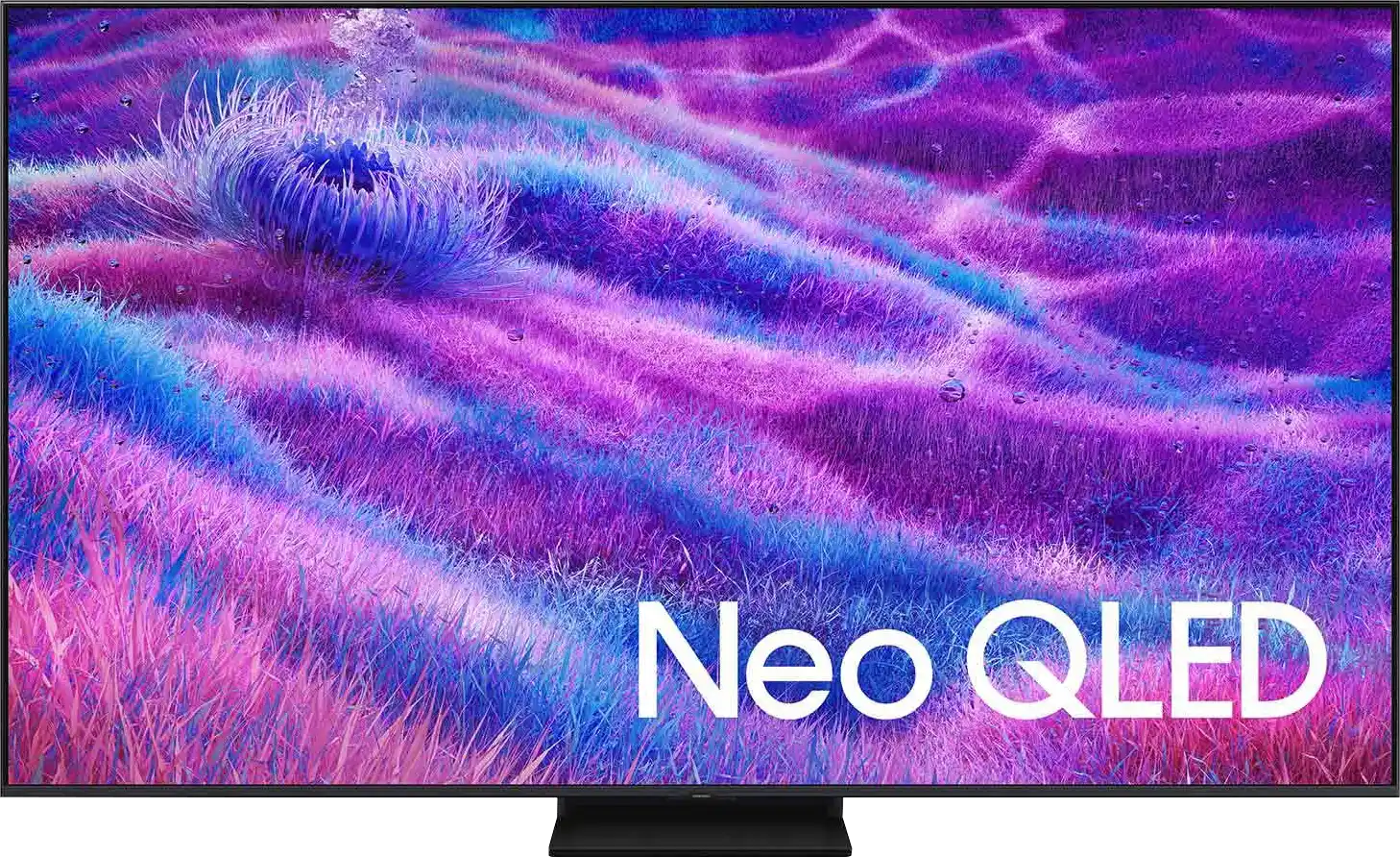
Panel type: LCD VA
Resolution: 3840x2160
System: Google TV
Model year: 2025
Complete the survey to find out the result

Panel type: LCD VA
Resolution: 3840x2160
System: Tizen
Model year: 2025
Complete the survey to find out the result

Overall rating
7.1
7.3
Movies and series in UHD quality
6.7
6.9
Classic TV, YouTube
6.6
6.8
Sports broadcasts (TV and apps)
6.3
6.7
Gaming on console
8.4
8.5
TV as a computer monitor
8.6
8.8
Watching in bright light
6.4
6.6
Utility functions
7.0
7.7
Apps
9.6
8.7
Sound quality
6.5
6.7
Complete the survey to find out what fits your preferences
Advantages
Very good contrast and black: VA panel and MINI-LED backlighting
Good motion smoothness: High refresh rate of 144Hz
Not bad brightness of the panel
Many features for gamers: VRR, ALLM, HDMI 2.1, HGiG
Additional mode for PC gamers: 240Hz
Google TV system with a wide selection of applications
Support for multiple HDR formats including Dolby Vision
Support for Dolby Atmos and DTS
Very attractive price
Impressive blacks and contrast - VA panel combined with MINI-LED backlighting.
Great brightness - up to 1000 nits in HDR
Fast and responsive panel - 144 Hz
Rich support for gamers - 4xHDMI 2.1, VRR, ALLM, GameBar, Game Motion Plus
Very good usability in daylight
Advanced Tizen operating system
Simple operation
PiP function
Disadvantages
Managing the backlighting could be better
Language errors in the system
No support for DTS format – a limitation when connecting a home cinema
No recording function to USB
Relatively few dimming zones
Issues with the HGiG function (for gamers) – the update removed this option*
Our verdict
The QN80F is the first "eighty" from Samsung to enter the series of televisions with Mini LED backlighting. And it does this very well. Although the number of dimming zones isn't particularly impressive, the quality of black levels is solid, and combined with high brightness, it allows for a very decent picture in HDR content. Additionally, there's a 144Hz panel that ensures excellent motion fluidity, and the set of gaming features – VRR, ALLM, Game Motion Plus – makes the QN80F a model practically designed for those gaming on consoles or PC. The television operates quickly and responsively, and the Tizen system runs like lightning – whether you're searching for apps or switching sources. Is there anything to criticise? Of course, as always – there are shortcomings in the system (like USB recording), there's no DTS support, and Mini LED isn't without its limitations. But the QN80F is a fantastic television for everyday use – versatile, refined, and... with great pricing potential. Because looking at the history of this series, we can expect that this "eighty" will mix things up significantly once it hits the first sensible promotions. At that point, it could be virtually unmatched in its price range – especially if Samsung resolves the minor teething issues.
TV appearance
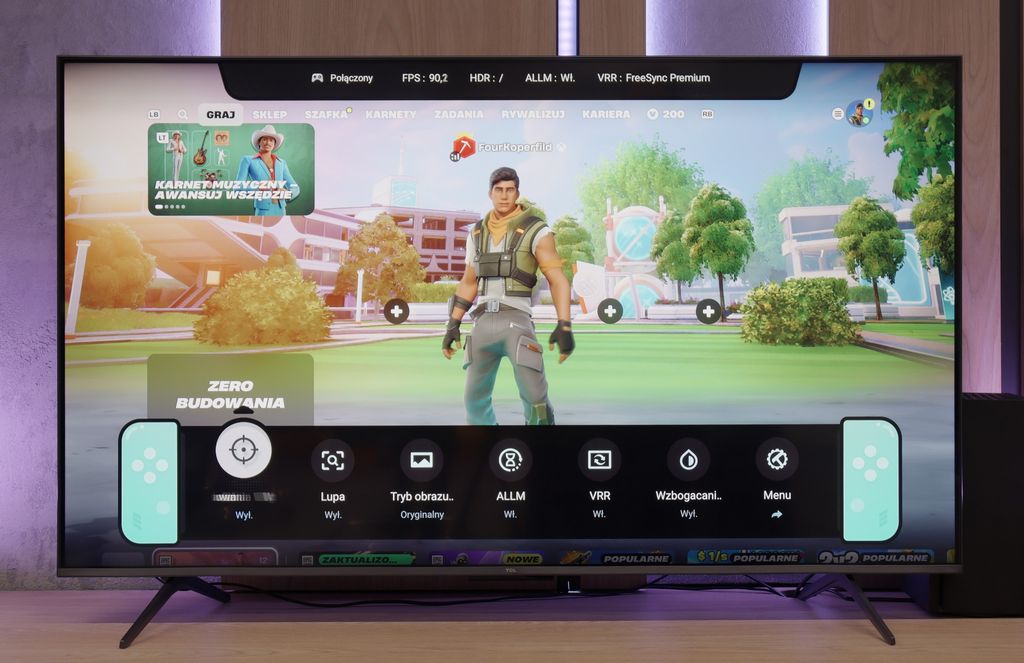
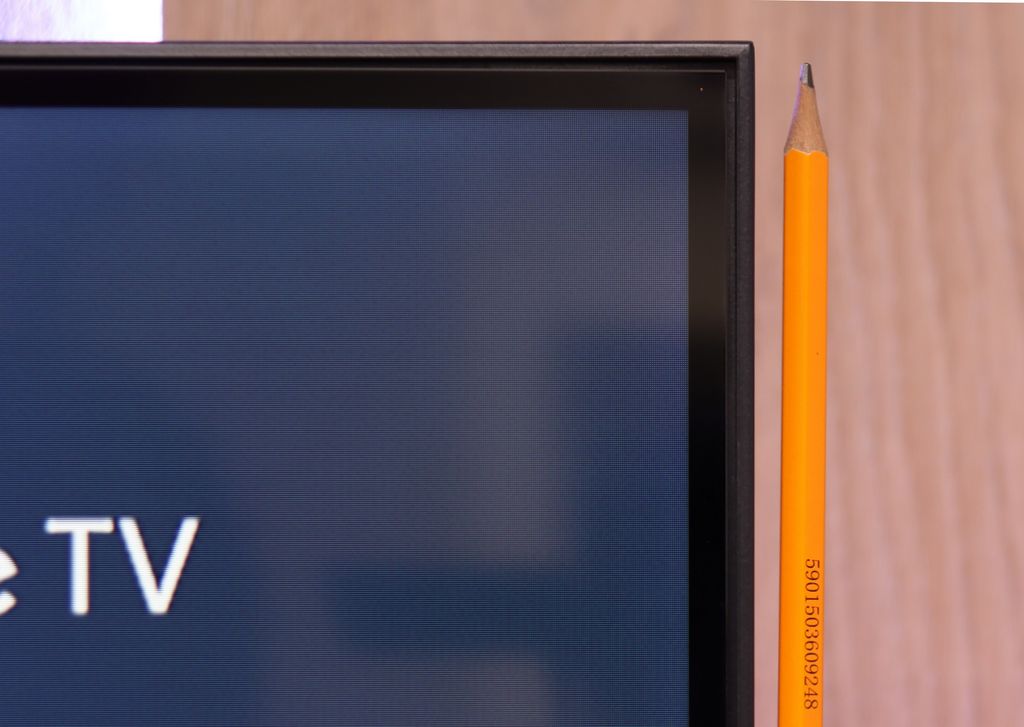
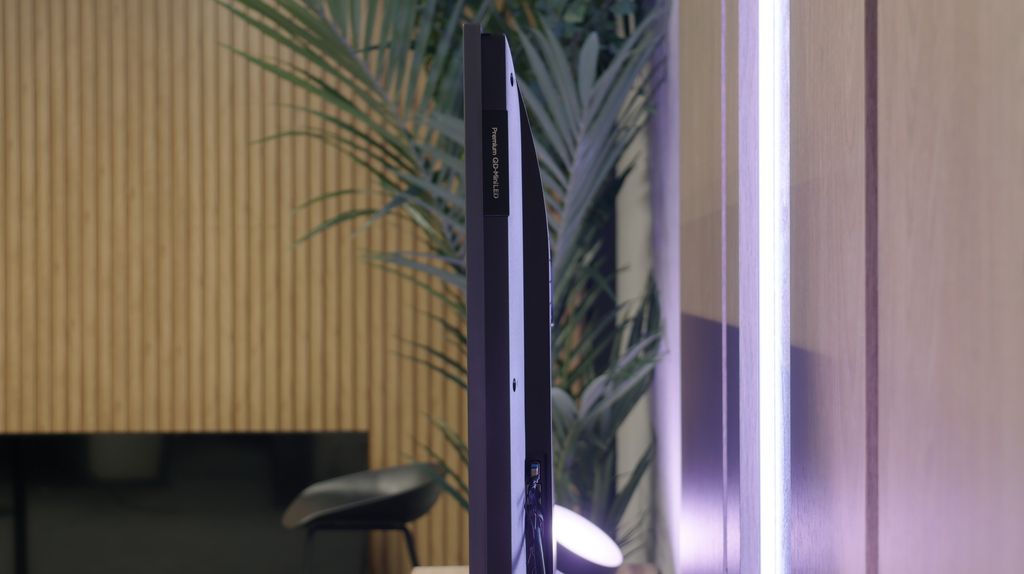
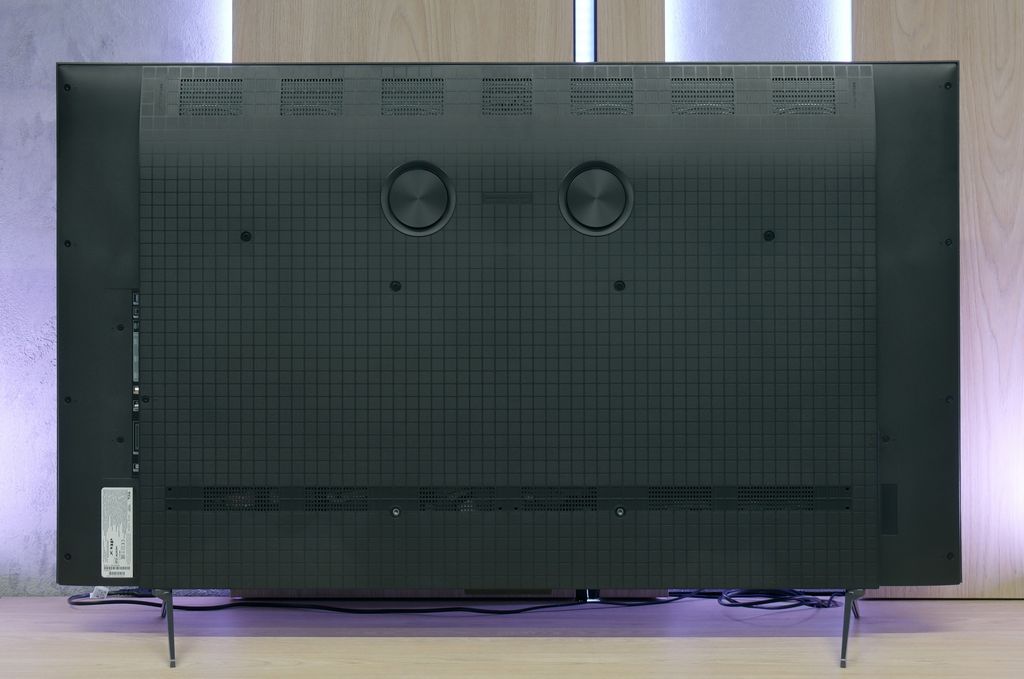
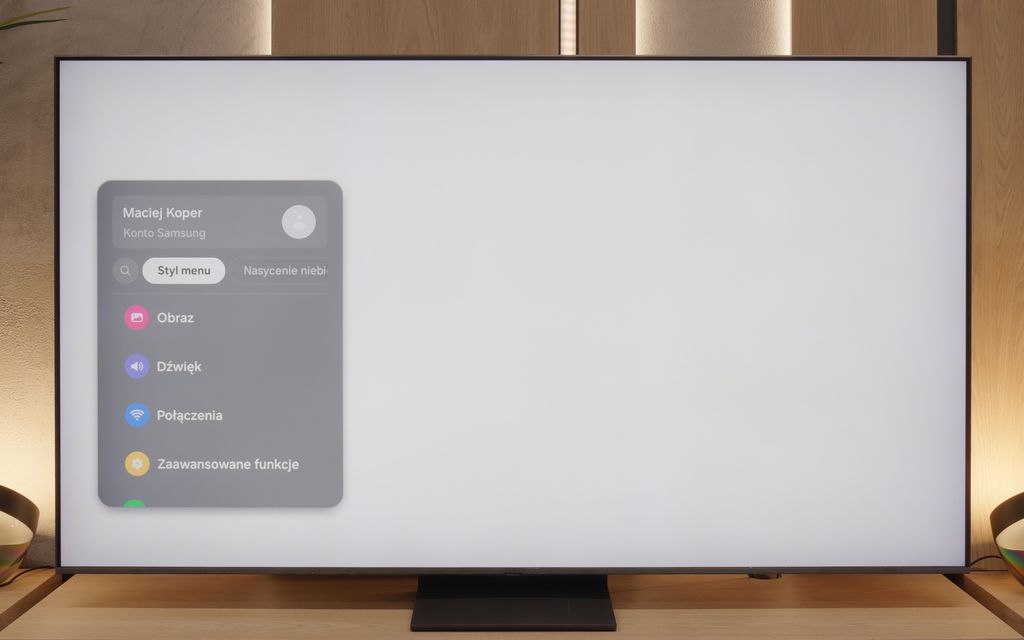
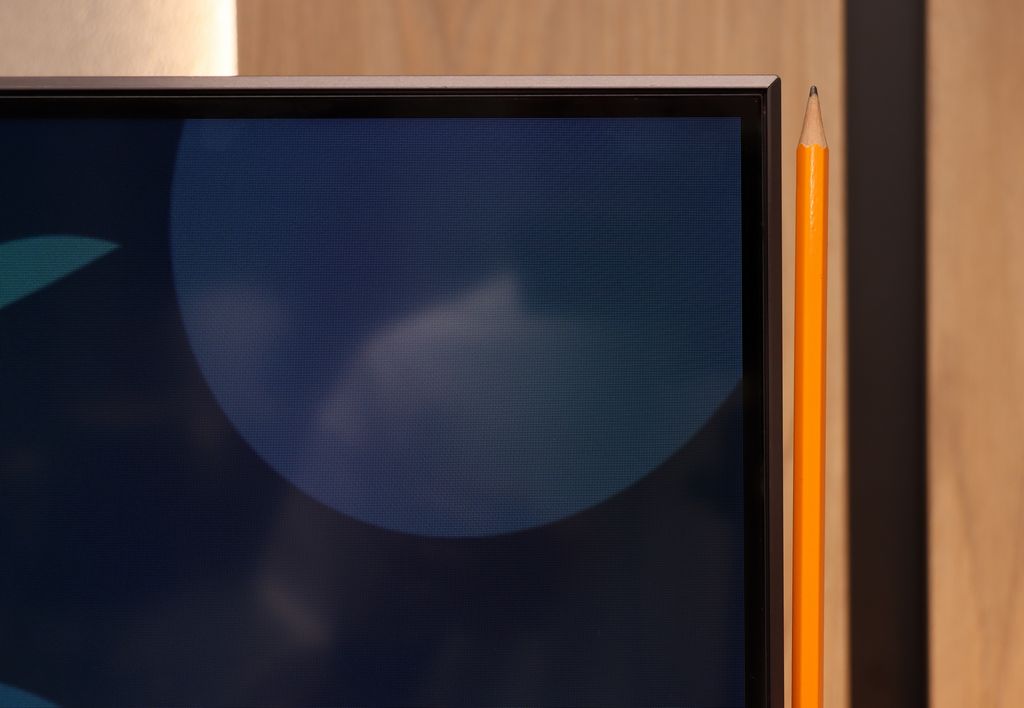
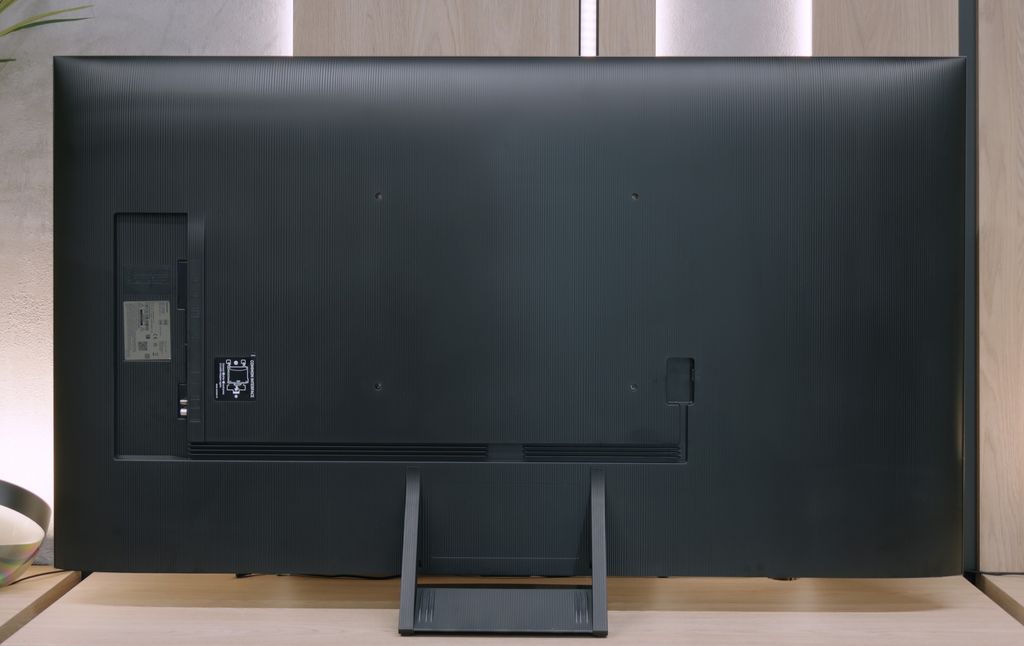

Contrast and black detail
7.3/10
6.8/10
Local dimming function: Yes, number of zones: 180 (10 x 18)
Local dimming function: Yes, number of zones: 88 (8 x 11)
Contrast:

Result
114,000:1

Result
17,300:1

Result
16,200:1

Result
9,900:1

Result
4,850:1

Result
34,100:1

Result
8,200:1

Result
32,500:1

Result
4,550:1

Result
3,800:1
Halo effect and black detail visibility:
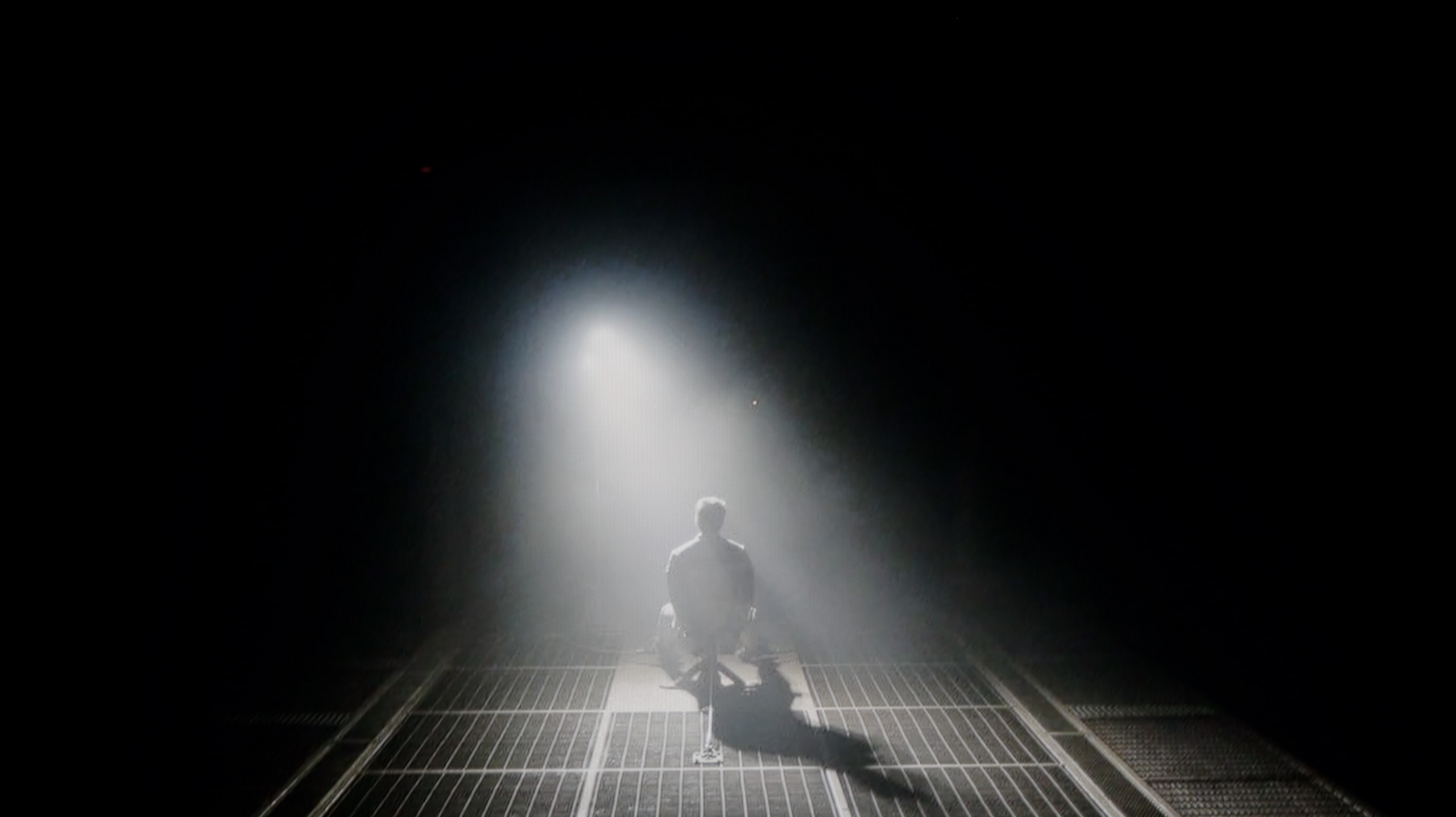
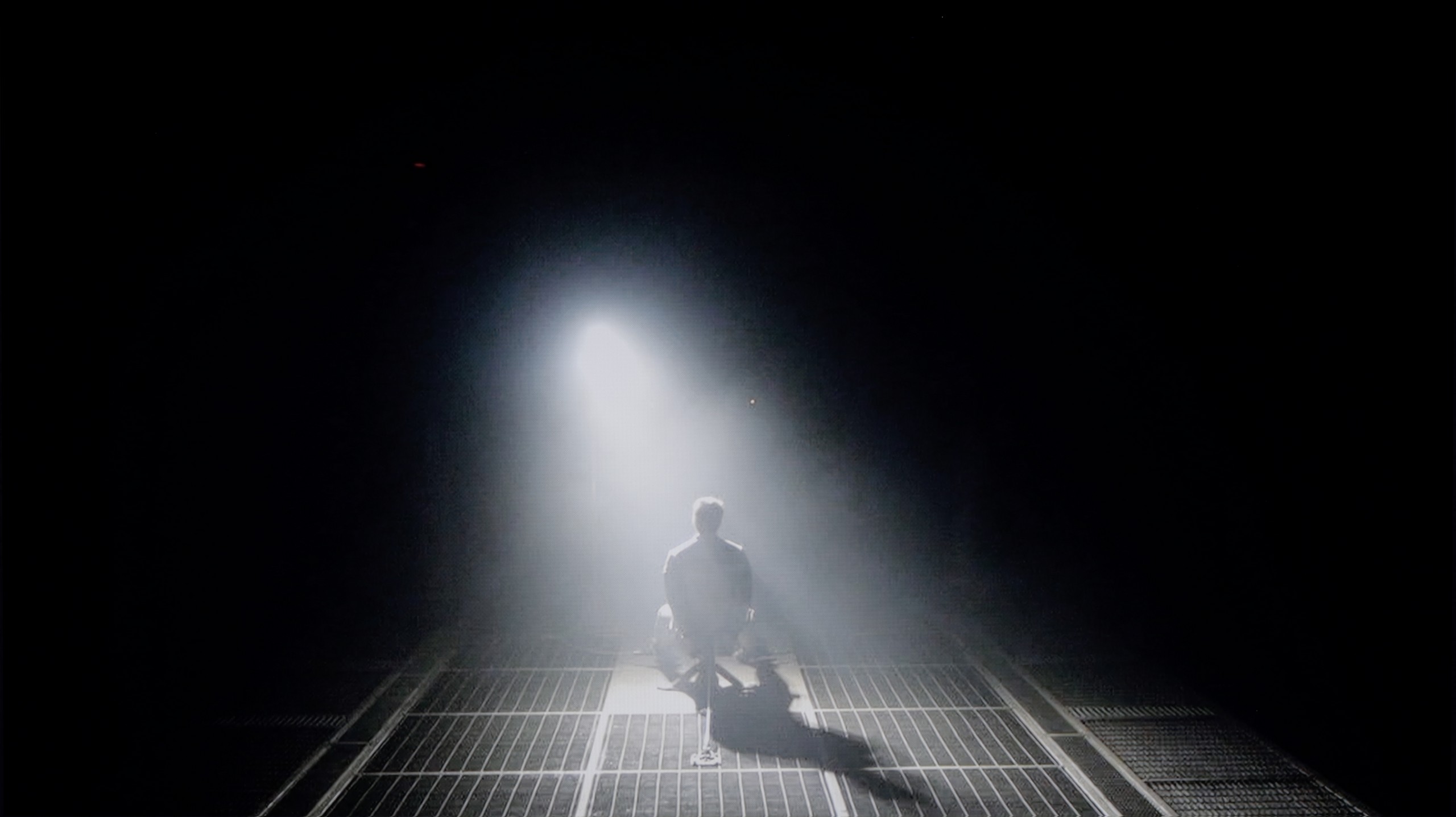
The TCL C6K is based on a VA panel, more specifically an HVA manufactured by TCL CSOT, which in itself provides solid native contrast at a level of 6000–7000:1 without the use of local dimming. However, the real strength of this model lies in the Mini-LED backlighting that allows for the dimming of individual zones. In the tested 55-inch version, we counted around 180 of these zones, and with an increase in diagonal size, this number naturally grows. For a television in this price segment, the contrast is truly impressive. In simpler film scenes, such as segments from "Oblivion," it performs excellently, and shots completely bathed in black make a great impression. Of course, due to the nature of Mini-LED technology, it is not always possible to avoid issues – in more challenging frames with many bright details, halo effects may appear or some elements may be dimmed too much (regardless of local dimming settings). Nevertheless, contrast can be considered a strong point of the C6K.
QN80F is a representative of the Neo QLED series, meaning it is a television with Mini LED backlighting. Unlike its cheaper cousin, the QN70F model, the diodes here are placed directly behind the panel (rather than at the edges), which gives it a solid advantage right from the start when it comes to contrast control. In the 65-inch variant we tested, we counted 88 dimming zones – a result that may not be particularly impressive, but as it turned out, sufficient to achieve quite decent results.
In tests based on scenes from films such as Oblivion and The Meg, the QN80F performed well – blacks were deep, and the overall image consistency was visually appealing. However, in more demanding moments (e.g., scenes with a large number of bright details on a dark background), a halo effect appeared. This is where the limitation of the number of zones becomes evident – bright elements could bleed into one another, and some details in the dark areas lost visibility. In one scene featuring a helicopter (The Meg), we even noticed slight brightness flickering, as if the television was trying its best to maintain detail visibility at the expense of black depth.
However, these issues are not exclusive to this model – halo effects or drops in contrast during very complex scenes are challenges faced by most Mini LED televisions, even the more expensive ones. In its class, the QN80F performs positively and offers significantly better contrast than the QN70F model with edge backlighting. For most users, this will be a level more than sufficient – although not perfect.
HDR effect quality
4.9/10
5.8/10
Luminance measurements in HDR:

Result
612 nit

Result
202 nit

Result
424 nit

Result
144 nit

Result
587 nit

Result
799 nit

Result
533 nit

Result
717 nit

Result
245 nit

Result
656 nit
Scene from the movie “Pan” (about 2800 nits)


Scene from the movie “Billy Lynn” (about 1100 nits)


Static HDR10


Dynamic: Dolby Vision
Dynamic: HDR10+


HDR luminance chart:
Samsung QN80F
Luminancja HDR
Luminance of RGB colors
TCL C6K
Luminancja HDR
Luminance of RGB colors
TCL C6K is a moderately bright television that can showcase its full potential under the best cinematic conditions – the maximum brightness is around 600 nits. In scenes with large, intense light sources, the HDR effect can be truly satisfying, providing a sense of cinematic sparkle. However, it is important to remember that when managing backlight zones, there are occasions where some elements are dimmed, and at times become barely visible. It is clear that there is a lack of proper algorithm optimisation here, although looking at the technical parameters in this price range, the overall construction performs exceedingly well.
QN80F is quite a bright screen – in synthetic tests, it achieved nearly 1000 nits, which allows for justified expectations regarding HDR content. And indeed, in many scenes, the television can truly shine. Sequences with a lot of light – like shots from the film Life of Pi or wide, bright surfaces in The Meg – look impressive. Brightness remains around 700 nits, which provides a solid effect, sufficient to feel the true "HDR magic." Unfortunately, not every scene looks that good. In materials with small, bright details on a dark background, such as in Sicario 2, the television has issues – it can significantly dim certain elements, sometimes to the point where they disappear from the image. This is the result of a limited number of dimming zones, which forces the device to make compromises: either maintain inky blacks or sacrifice some detail. QN80F usually chooses the former. As a consolation, there is quite decent coverage of a wide colour gamut – DCI-P3 at 93%. This is not the highest score on the market, but it is more than adequate for most content on streaming platforms.
Factory color reproduction
5/10
6/10


Factory Mode
After calibration


Factory Mode
After calibration
In this year's TCL televisions, the Filmmaker mode has appeared, and it must be admitted that it is definitely the best choice straight out of the box. This is the mode we recommend for daily watching of films and series. Unfortunately, as is often the case, the best does not mean perfect. In the case of SDR content, the image was too warm, as the red was quite pronounced in the white balance. Conversely, with HDR content, we had the opposite impression – the image became cooler than it should have been due to an excess of blue. Additionally, the brightness characteristics sometimes led to overexposure. In practice, this resulted in quite noticeable errors in colour tests, which are difficult to accept in a mode advertised as "from the creators."
We test televisions always in the best available factory mode – in the case of the Samsung QN80F, this is the Filmmaker mode, and indeed, it is this mode that offers settings closest to the creators' intentions. However, this does not mean that everything looks perfect. In SDR content, the biggest problem turned out to be an unbalanced white balance – slight deficiencies in green and a noticeable excess of red led to discernible colour errors, one could even say a pinkish tint on the screen. This was well demonstrated in the colour checker test, where the colours 'escaped' beyond their target fields – to the extent that even a sensitive viewer's eye could catch this without the aid of a meter.
In HDR content, the white balance was much better, but another issue arose – brightness management. The EOTF curve resulted in an overly bright image for most of the time, which could affect the perception of contrast and caused the screen to subtly 'flicker' during dynamic light changes. We have already written more about this in the paragraphs on black levels and HDR. Fortunately, Samsung leaves the user with plenty of options. The QN80F offers a rich set of calibration options, including a 20-point white balance – therefore, we decided to check what this television is really capable of after proper calibration.
Color reproduction after calibration
7.5/10
8.3/10

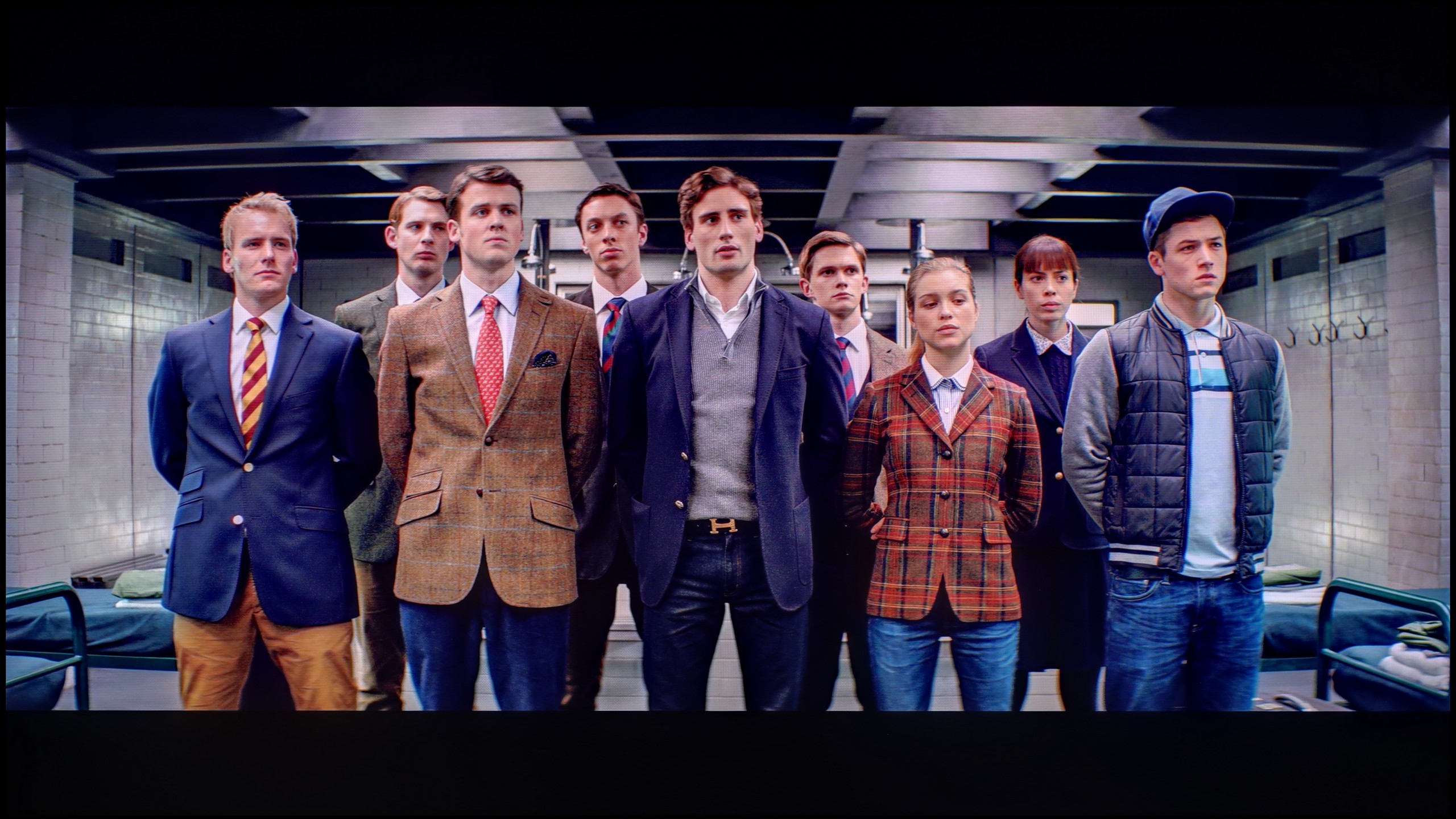


Thanks to the white balance adjustment, it was possible to significantly reduce the C6K's tendency to distort colours, which translated into a very good final result. After calibration, we will no longer observe the effect of excessive warmth in SDR scenes or overly cooling the image in HDR. However, it is worth taking a closer look at the brightness characteristics. In SDR content, it is difficult to have major objections – the image looks really good, especially in older films, television programmes, or materials from YouTube. It fares much worse in the case of HDR content. An analysis of the EOTF curve suggests that everything is fine, but in practice (EOTF in films), the limitations of the design become apparent. The television tends to over-brighten the smallest parts of the frame, and in other situations, it can dim an entire scene too much. The effect of calibration is therefore evident, and in terms of colour, the C6K has gained quite a lot, but certain limitations arising from local dimming and, in fact, from its management by the C6K simply cannot be overcome.
After conducting a thorough calibration, it was possible to bring most of the image parameters to a really good level. The white balance in both SDR and HDR is nearly perfect – the picture is natural, neutral and devoid of the previously noticeable redness. The colours have gained depth, and the overall visual reception has become more pleasant and cohesive. It was also possible to partially master the brightness management, which in the factory version could be problematic. The EOTF chart shows that the television performs significantly better with brightness after calibration – there is no longer excessive dimming of certain elements. In films, it can still be noticed that the QN80F has a tendency to slightly brighten the smallest, light details – however, this is the effect of the device's design and the limited number of dimming zones. In short: not everything can be overcome, but what could be has been improved. After calibration, the QN80F makes a really good impression; it simply looks more mature and professional.
Smoothness of tonal transitions
9.5/10
9/10
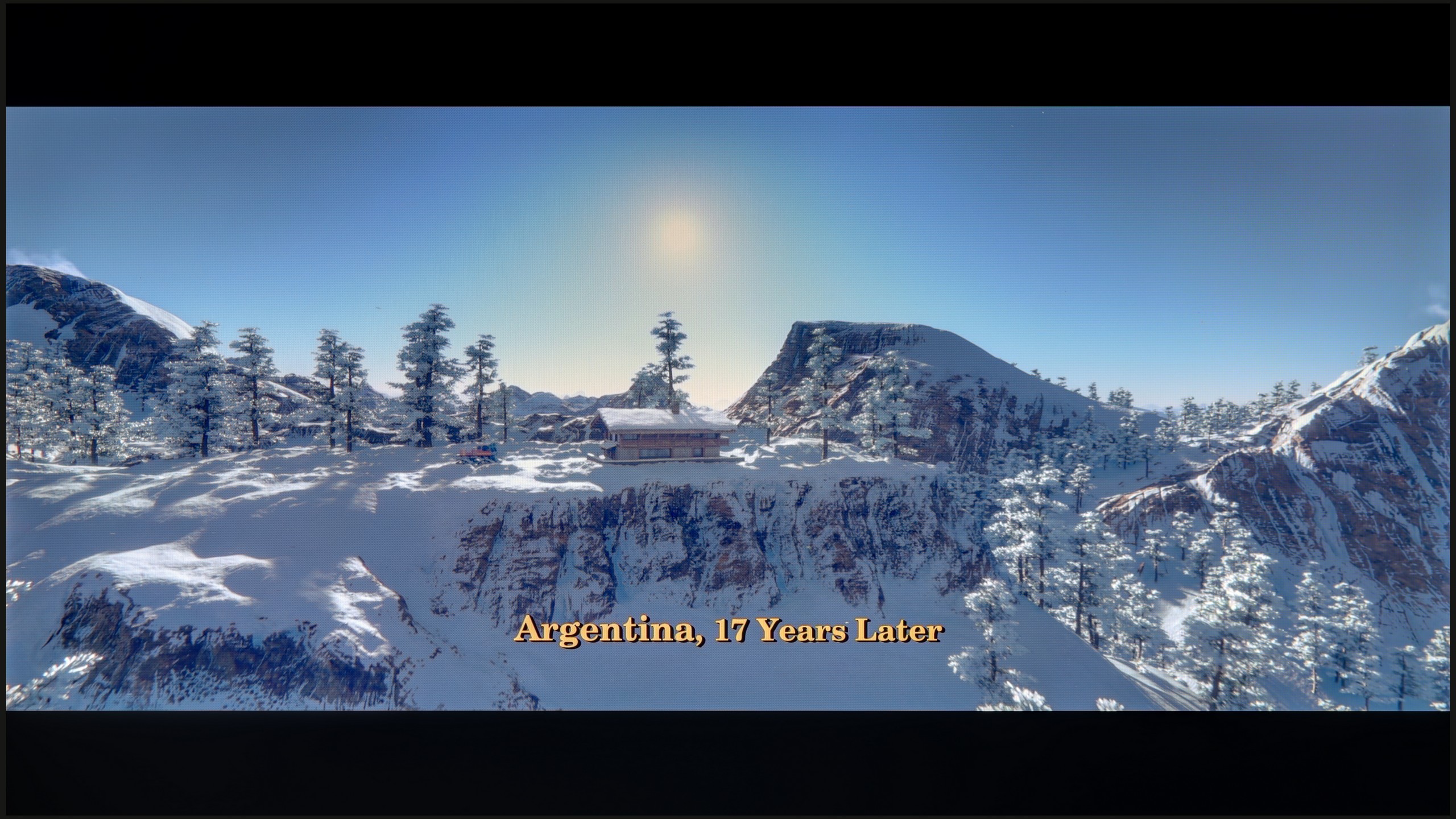



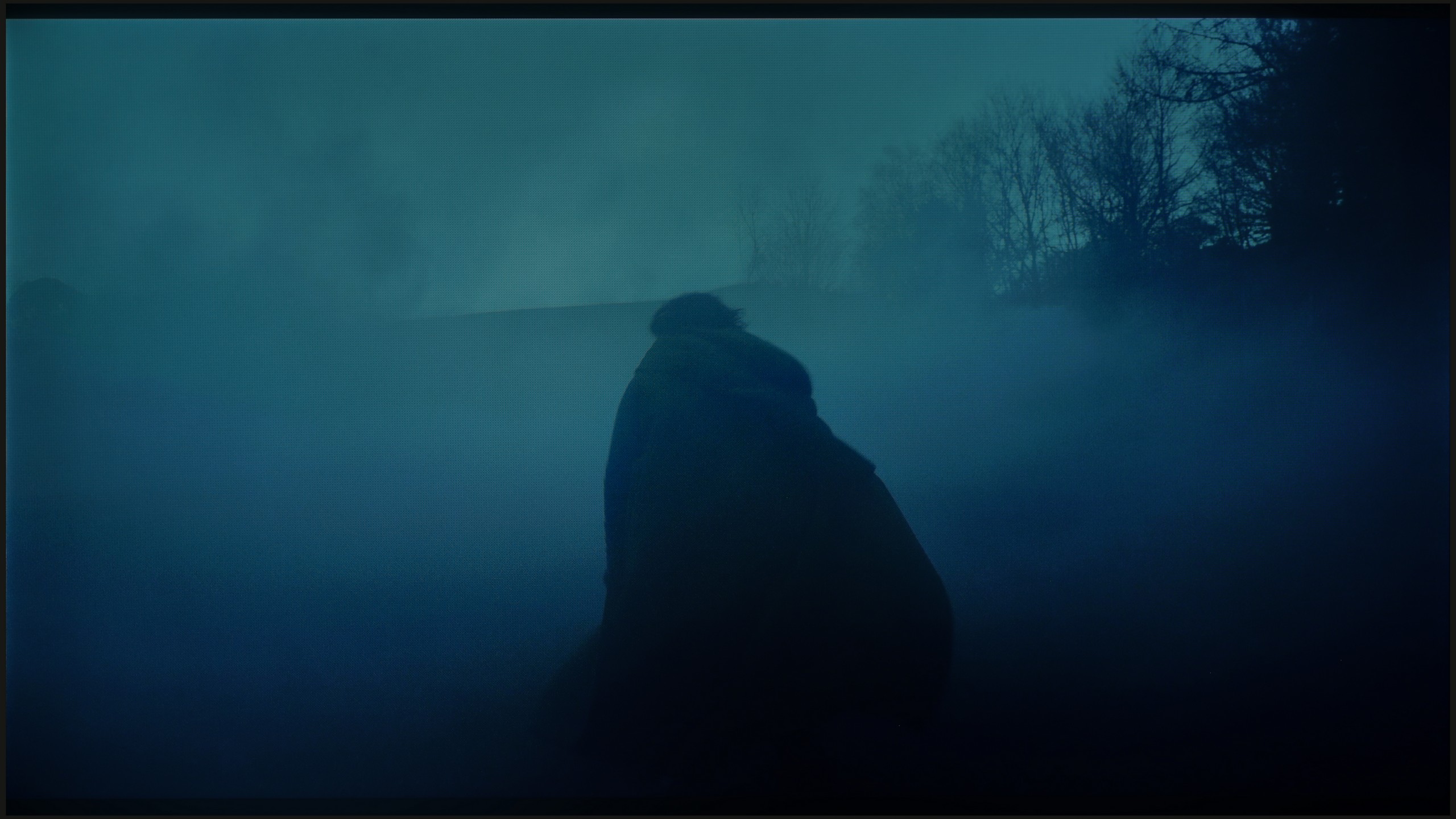
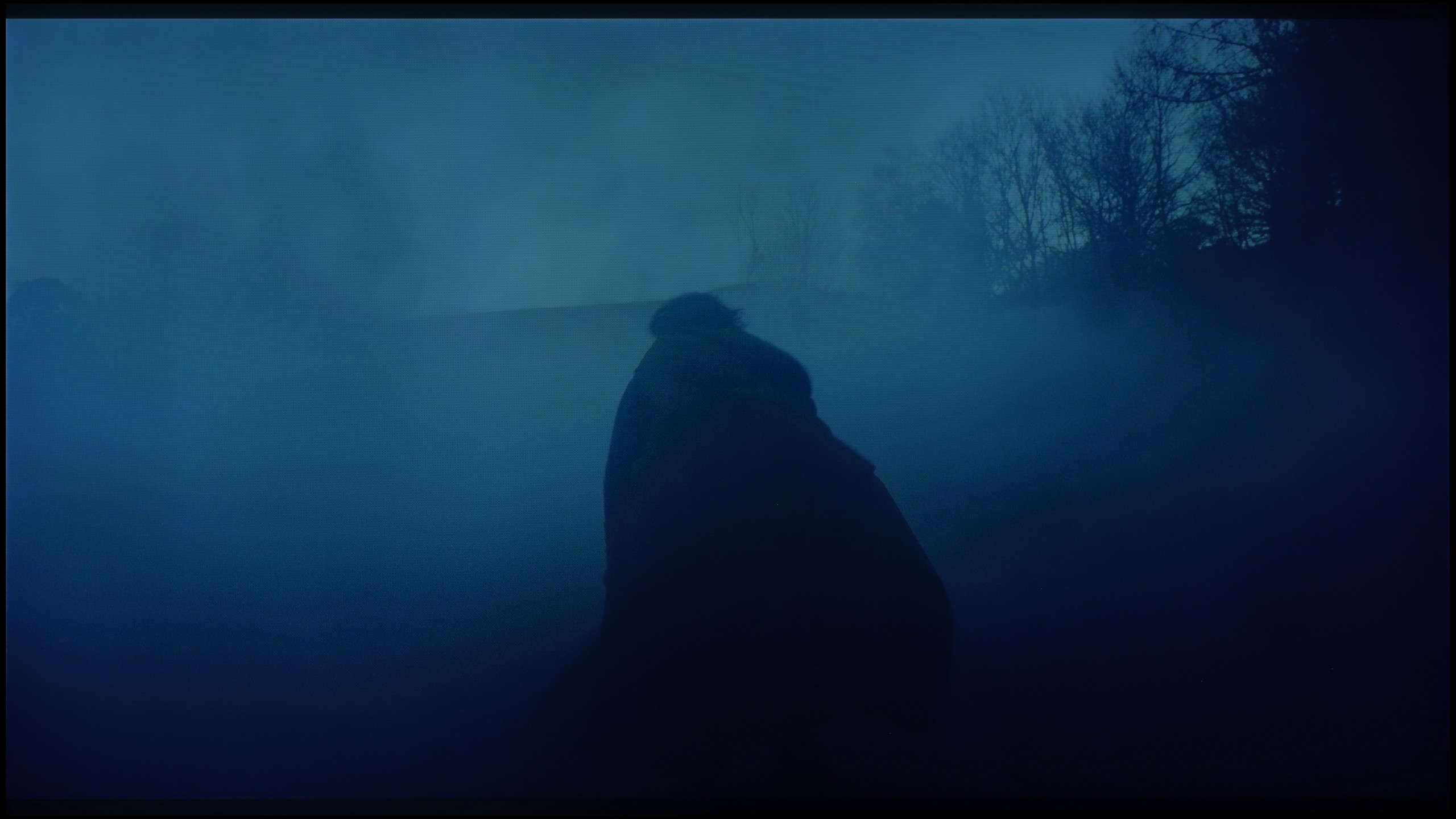
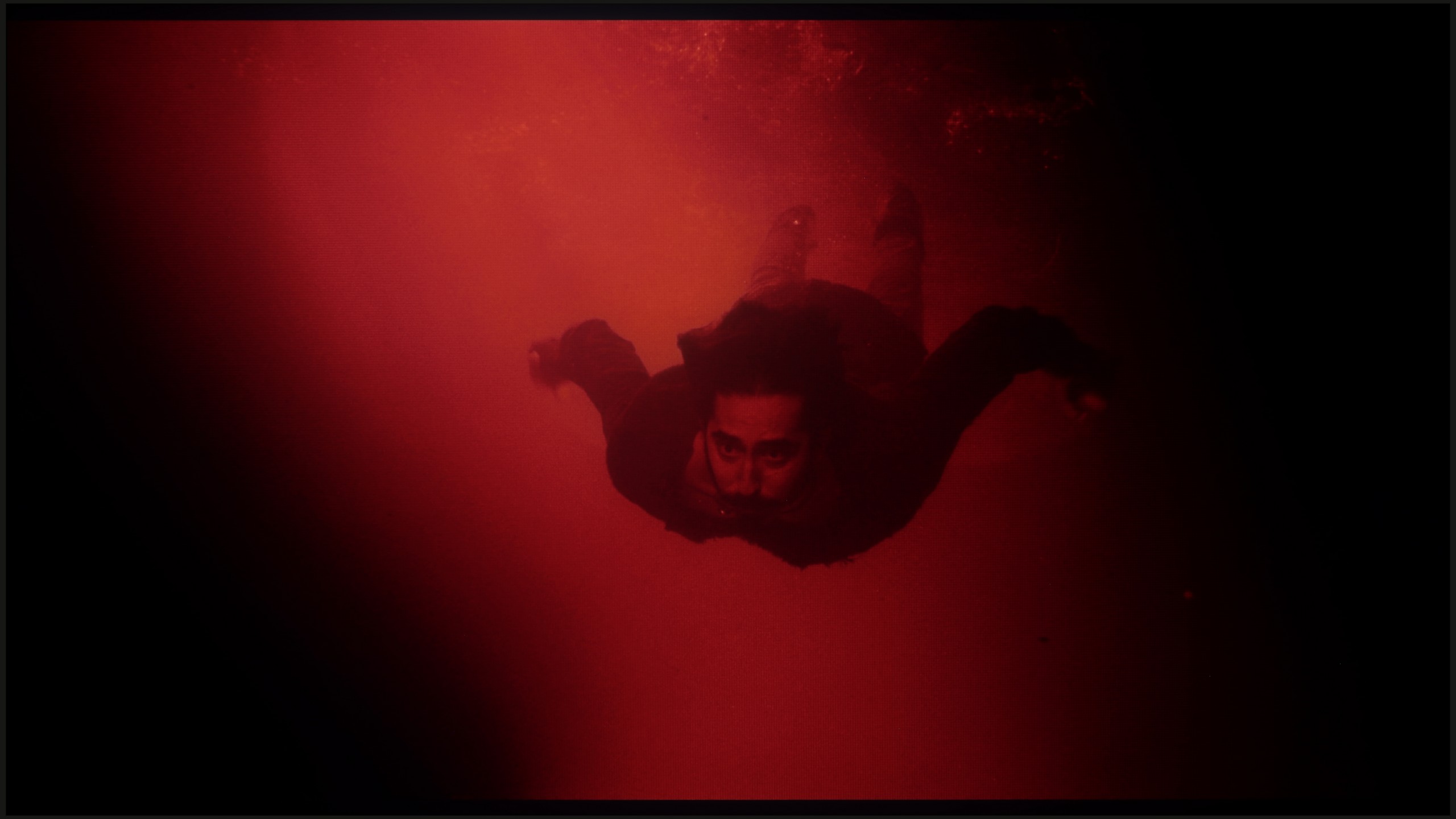
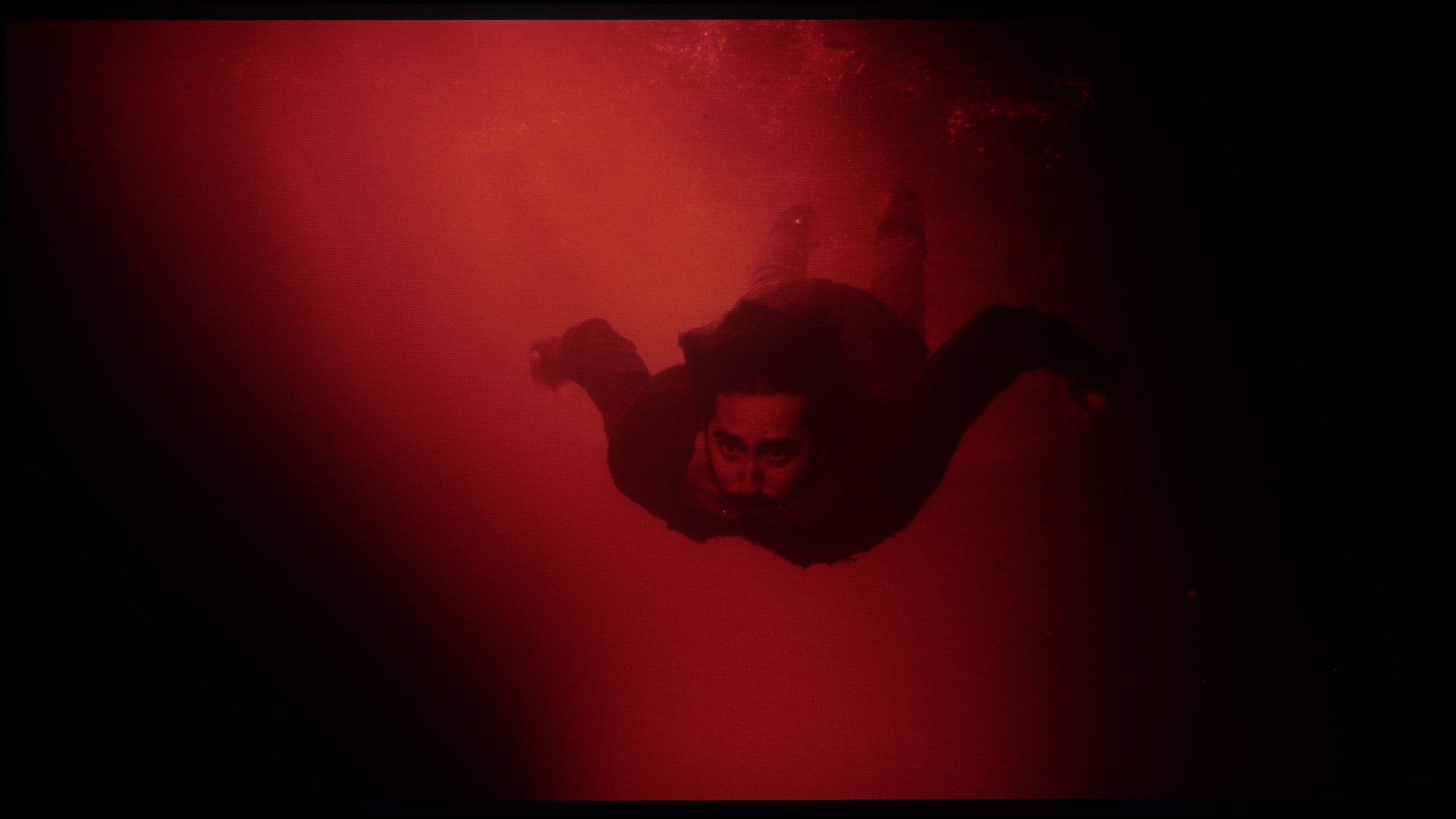




The transitions between colours in the C6K are very smooth, and it is hard to fault any banding. The image looks natural, and any minor imperfections can only be noticed on bright test patterns – and that with really careful viewing. In everyday use, the effect is simply excellent, and one can confidently say that in this category, the C6K performs remarkably well.
In this respect, the QN80F truly impresses. The transitions between colours are smooth, nothing is torn, and there are no annoying stripes in the sky or strange blotches in the shadows. Film scenes in darker tones performed particularly well – and this is where most televisions tend to struggle. If one is very determined, they may notice slight banding in the brightest sections, but that is really stretching for an issue. In everyday viewing, no one should have a problem with this. To put it plainly: the tonal transitions are so good that one can forget about them – and simply enjoy the film.
Image scaling and smoothness of tonal transitions
5/10
7/10
Smooth transition function
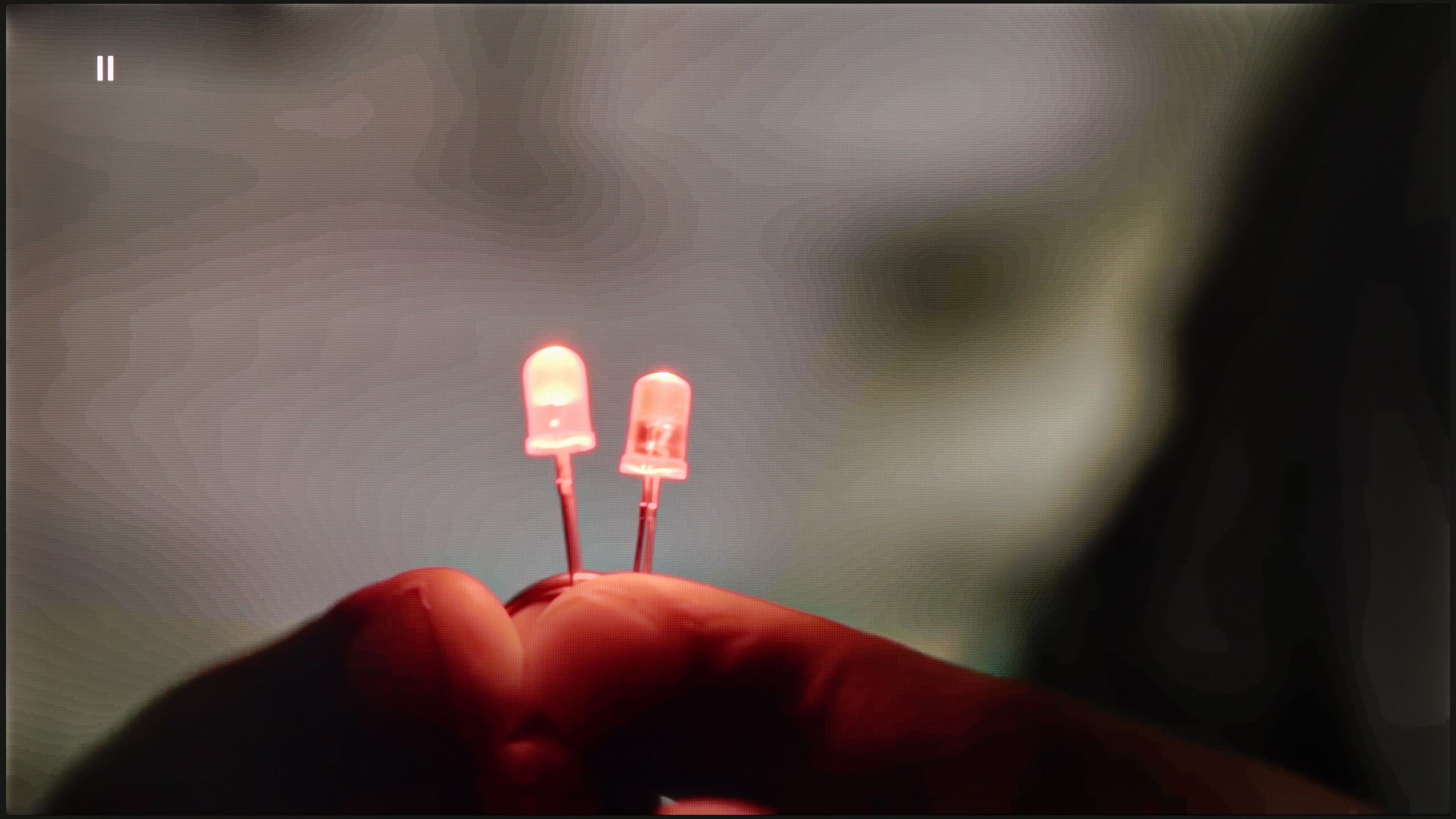

Image without overscan on the SD signal


TCL C6K performs quite well in terms of scaling. Lower quality materials look acceptable, and the absence of overscan issues means that the image is displayed in full, without cropping. However, one cannot expect miracles – very low-quality content will not gain a new life here, as the image processor has its limitations. On thin lines or details, there is a noticeable characteristic jerking, which reveals the lack of advanced image enhancement algorithms. It is also a pity that the C6K lacks the feature for smoothing tonal transitions – in older films or video materials, colour banding can be noticeable and can be distracting during longer viewing sessions.
If, while watching lower quality materials – for example from YouTube – we notice strange colour transitions or unwanted artefacts, it's worth checking the settings and turning on the noise reduction feature. In our opinion, the best setting is at “medium” – it effectively smooths out problematic colour transitions while not blurring the entire image too much. However, one must know this: this option tends to remove film grain. If someone cares about preserving this effect (e.g. in older films), it’s better to simply turn it off – regardless of the level, the grain always disappears.
When it comes to resolution scaling (or so-called upscaling), Samsung – as usual – performs very well in this area. The QN80F may not compete with top models costing tens of thousands, but for its price class, it really does impress. Materials of very low quality (e.g. from SD television or older video files) are noticeably improved and look surprisingly decent. The only noticeable drawback is the typical Samsung issue with overscan – that is, slight cropping of the image edges in very low resolutions, e.g. 576p.
Blur and motion smoothness
7.3/10
7.5/10
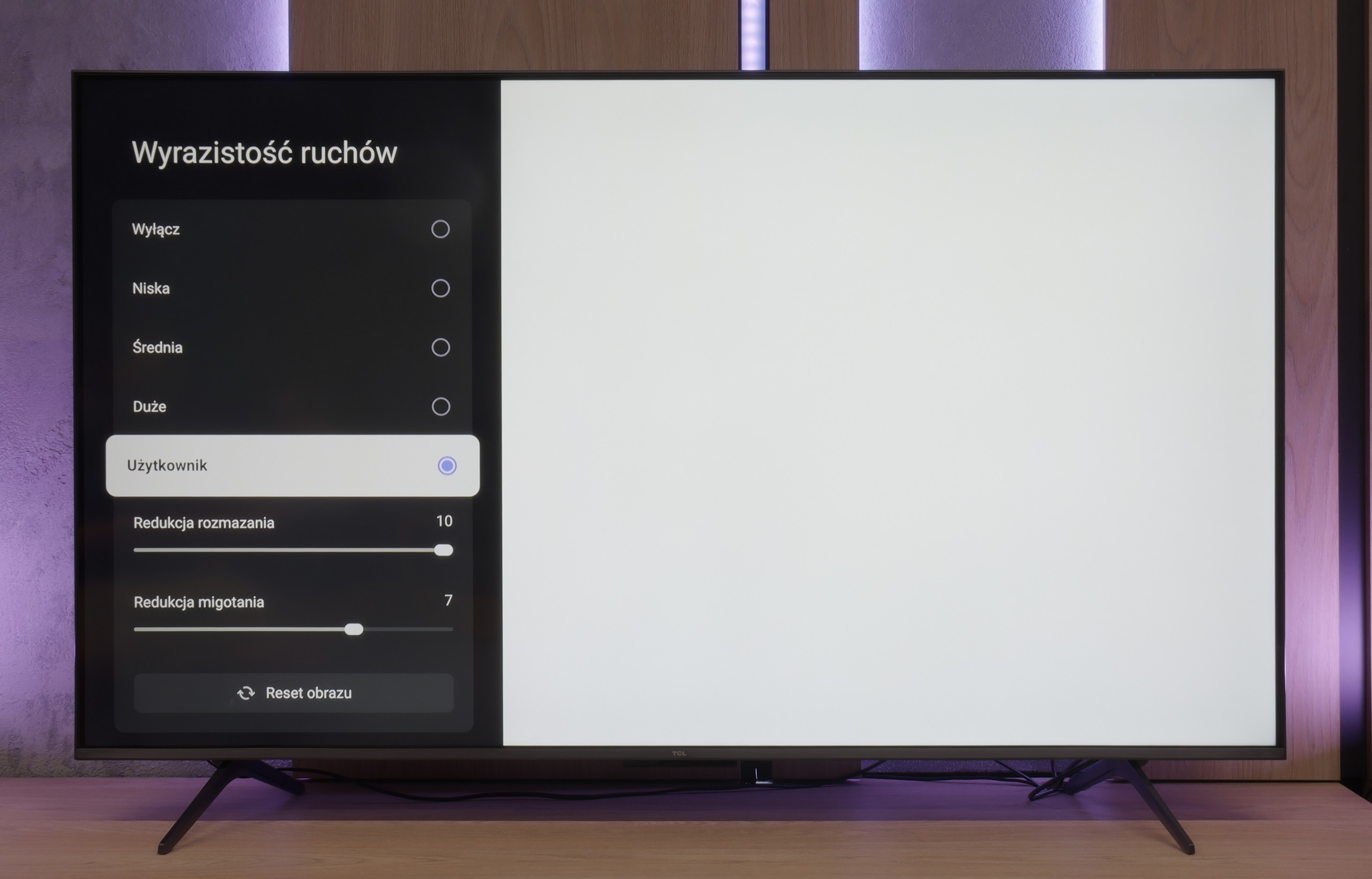
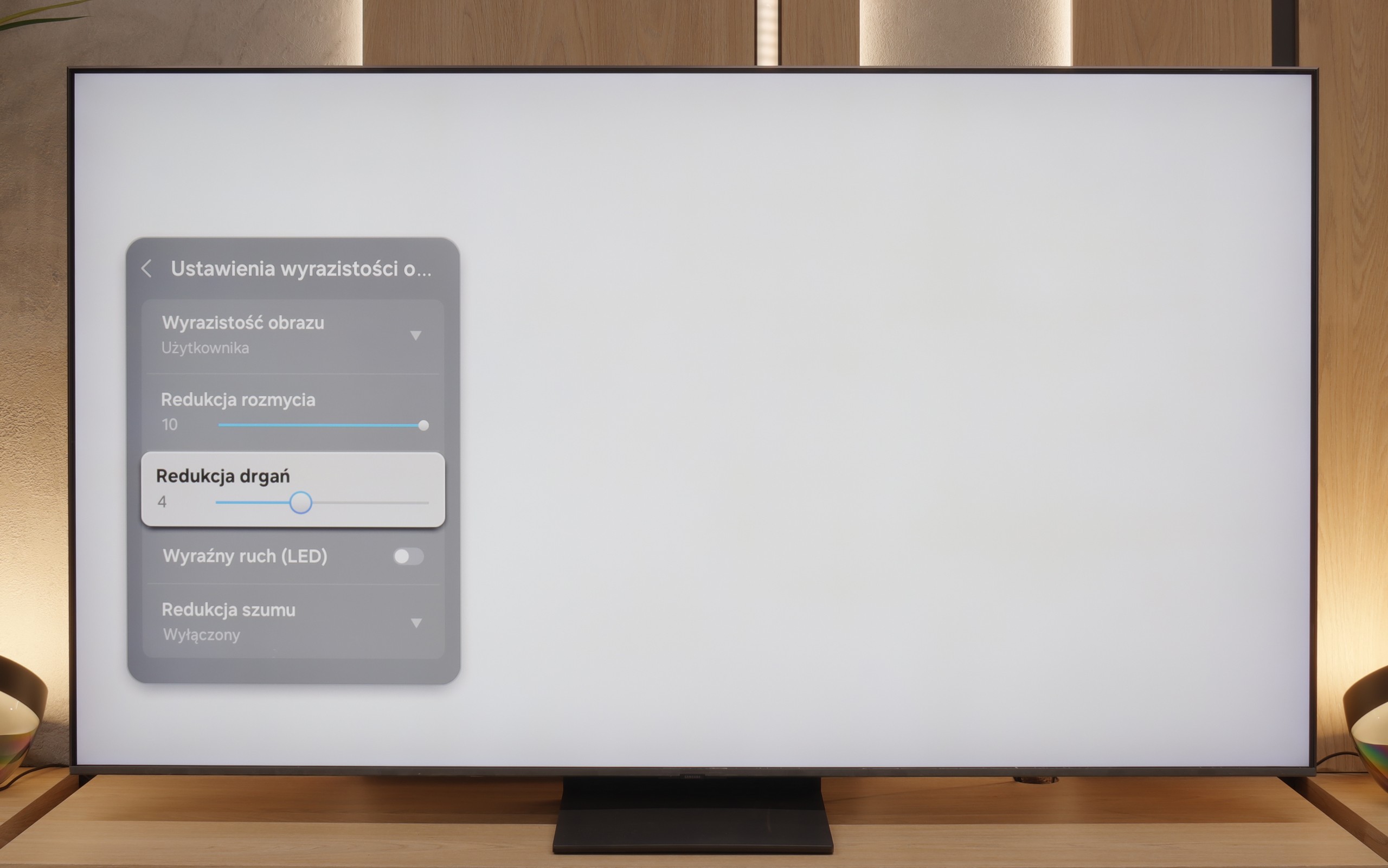
Blur (native resolution, maximum refresh rate):

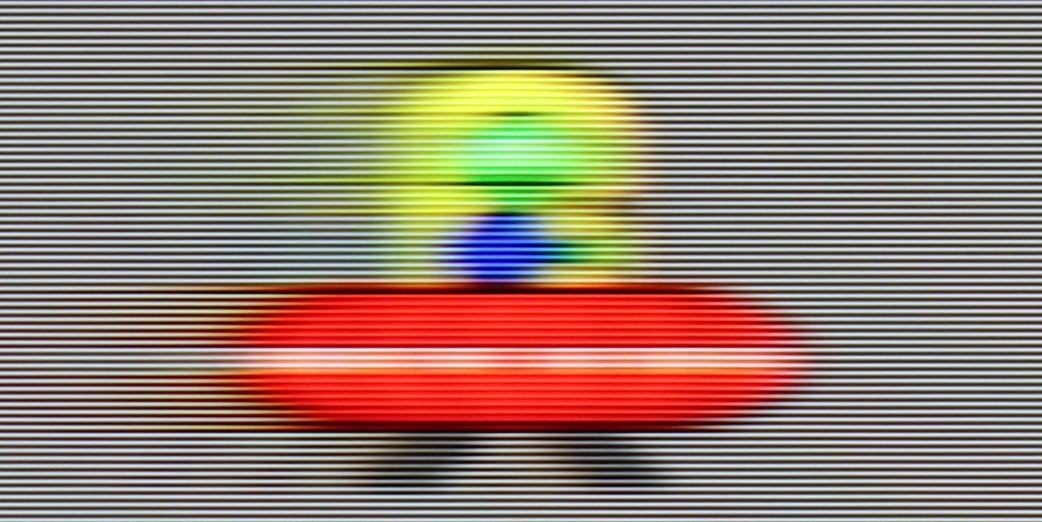
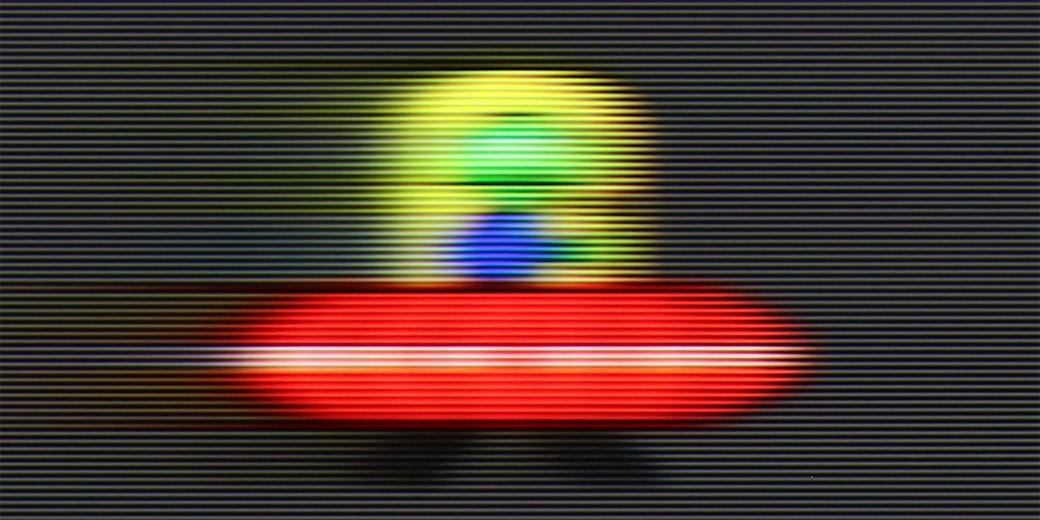



Blur (BFI function enabled):


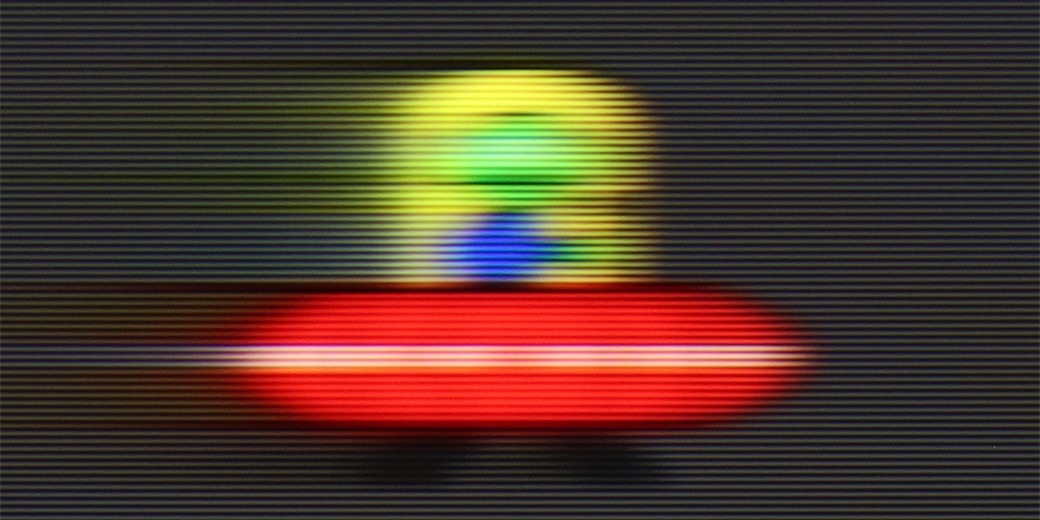
Image flickers in this mode

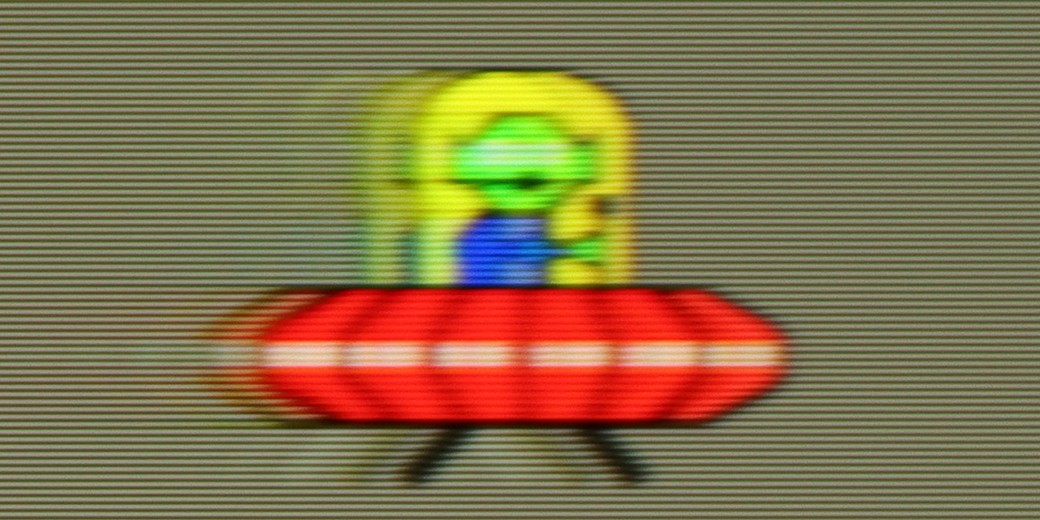

The TCL C6K utilises a 144 Hz panel, which is a significant advantage in this price range. This is an important step forward compared to the previous model, the C655 PRO, which only offered 60 Hz in 4K. The difference is especially noticeable when watching sports or gaming – the ball, players, or fast action in a game are shown more clearly and without losing details. Interestingly, the panel can also operate at 240 Hz, which the manufacturer does not mention in the official materials. We will return to this topic when discussing the PC gaming mode.
TCL has also added a feature for those watching films: "Motion Clarity", which allows users to adjust the image to their liking using two simple sliders. One can either keep the film frame visible or opt for a very smooth, almost theatrical effect. This way, everyone can find settings tailored to their taste.
QN80F is truly a "fast" television. The applied panel offers a refresh rate of up to 144 Hz, which in practice means that the screen keeps up with the action – whether we're watching a film, playing games, or browsing dynamic content online. The image doesn’t stutter, isn’t excessively smeared, and overall looks simply smooth and pleasing to the eye. Of course, the manufacturer hasn’t forgotten about cinema fans – in the settings, we’ll find an option to adjust motion smoothness, allowing us to tailor the effect to our personal preferences. We can maintain a more "framey" appearance (for those who enjoy the classic cinematic vibe) or ramp up the smoothness to a higher level for a theatrical smoothing effect. Importantly, the choice is ours. Watching films and playing on the QN80F is simply a delight.
Console compatibility and gaming features
9.8/10
8.2/10
- ALLM
- VRR
- VRR range48 - 240Hz48 - 144Hz
- Dolby Vision Game Mode
- Correct implementation of HGIG
- 1080p@120Hz
- 1440p@120Hz
- 4K@120Hz
- Game bar
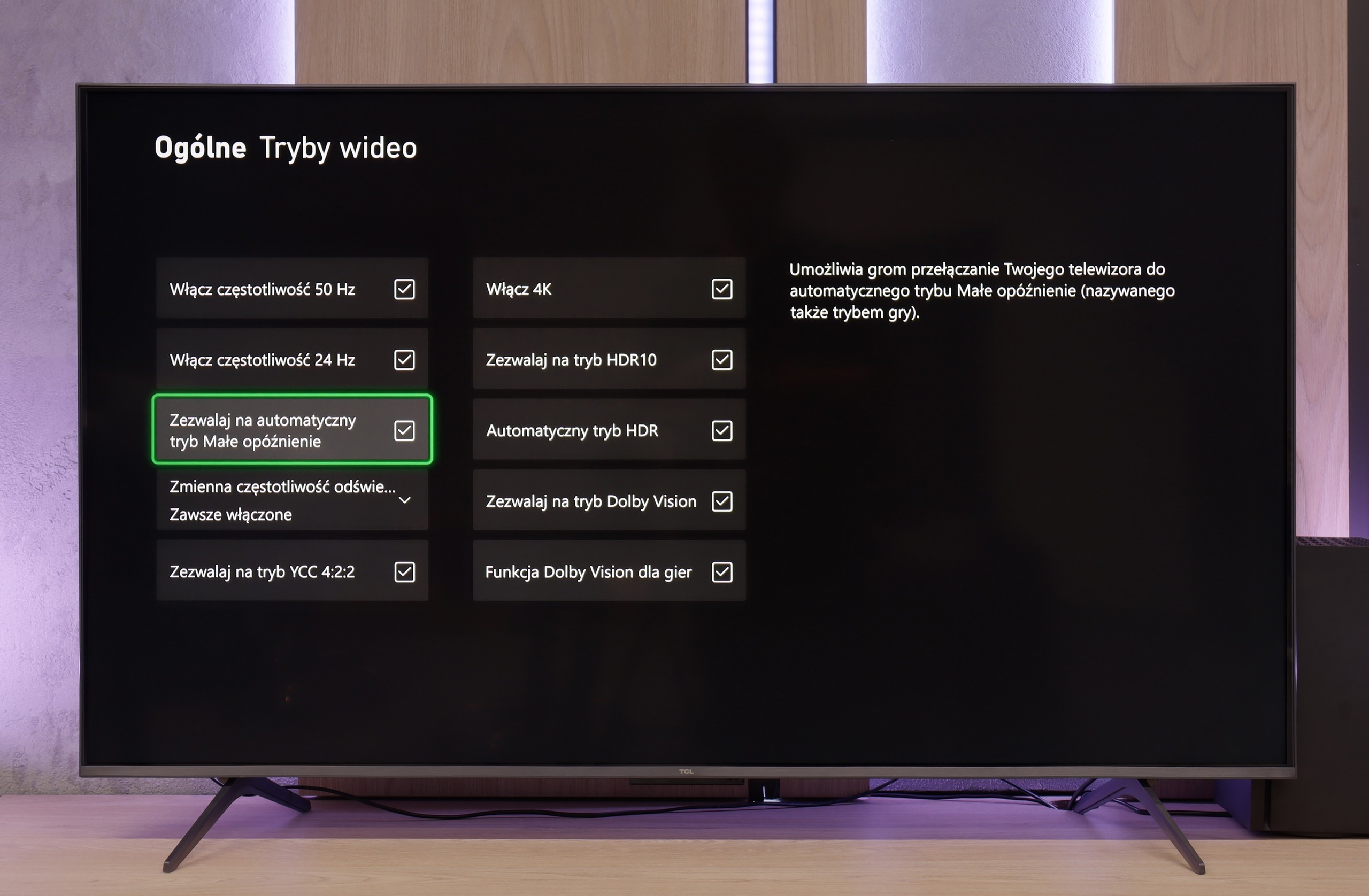
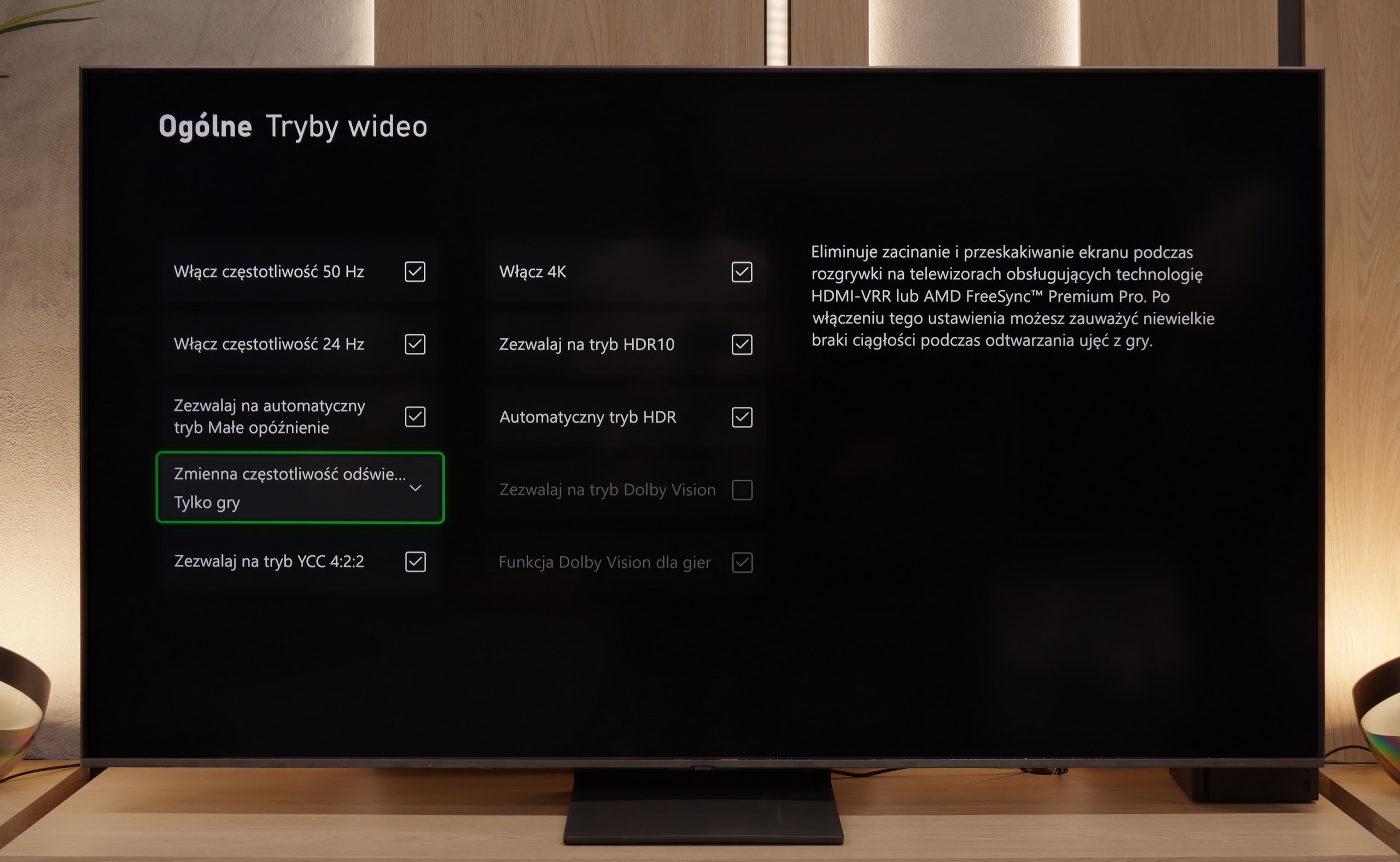
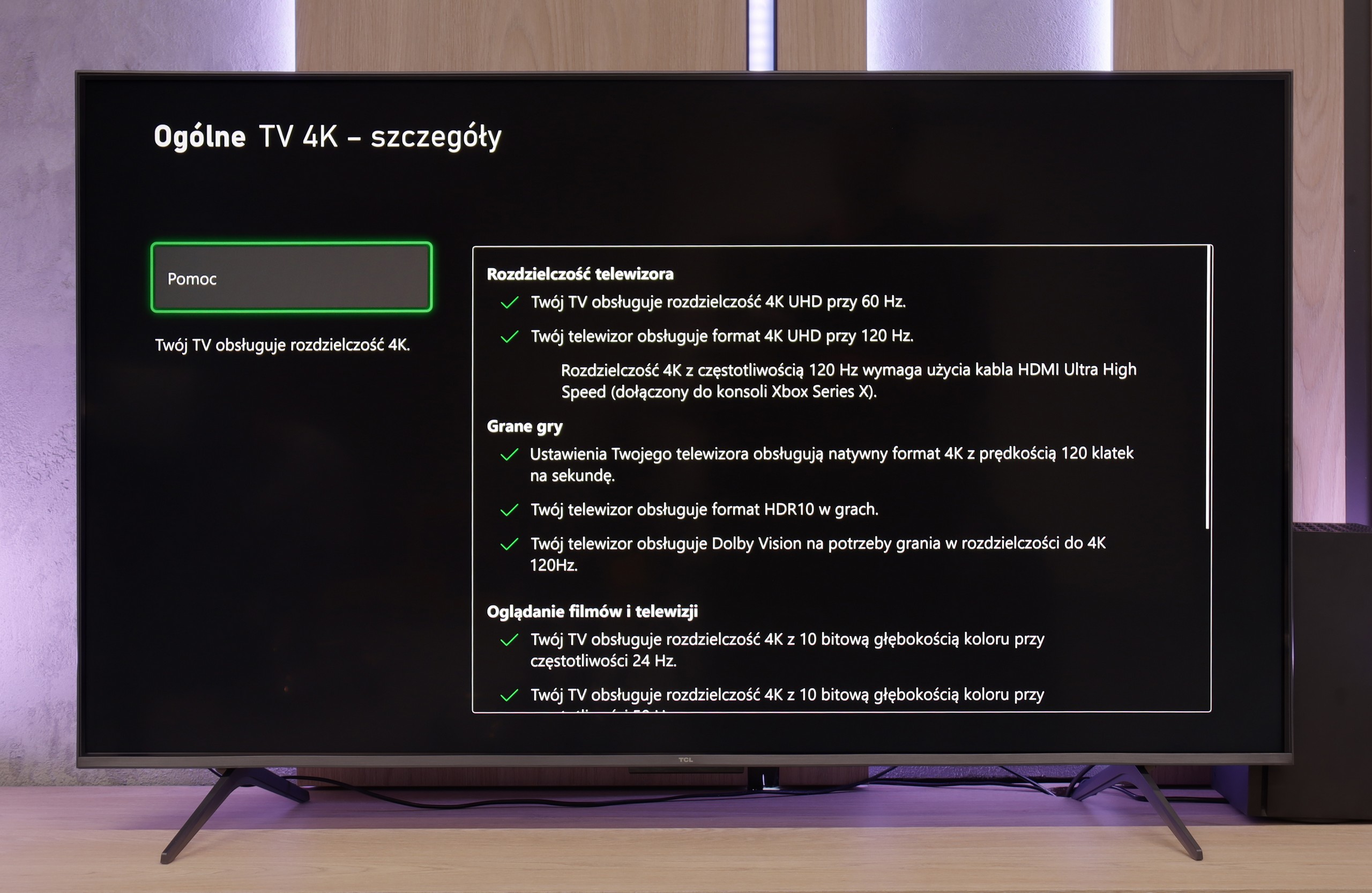

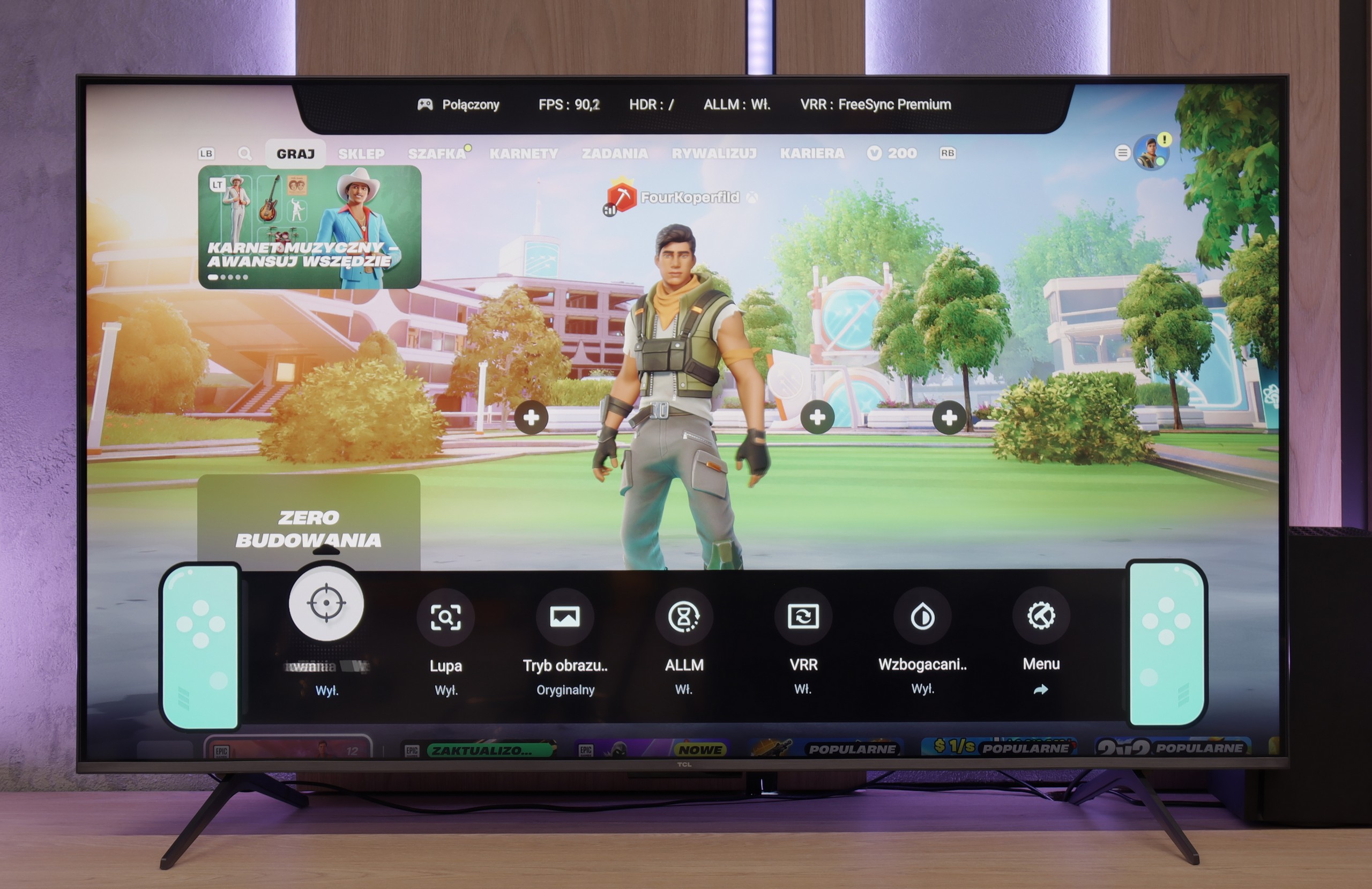
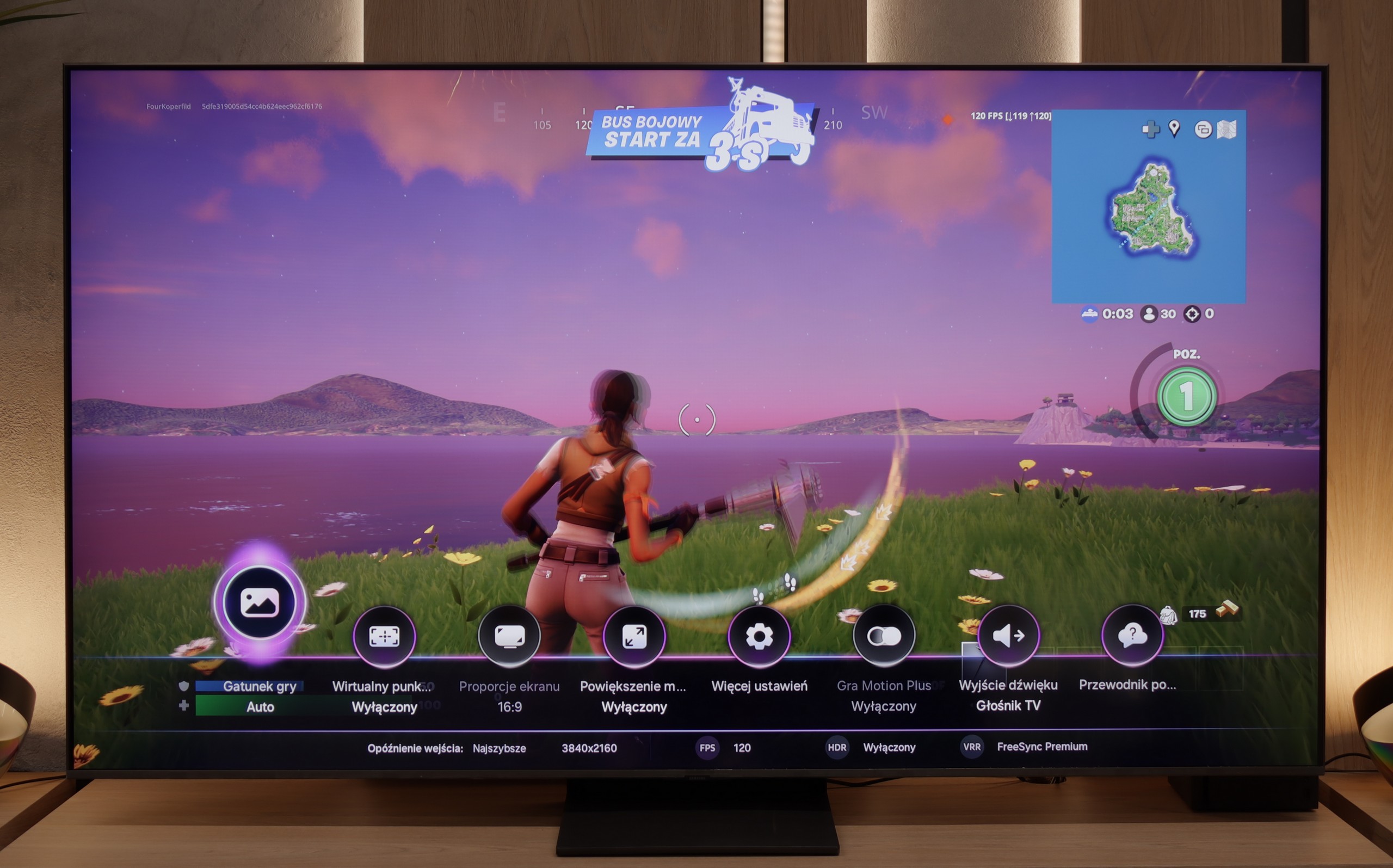

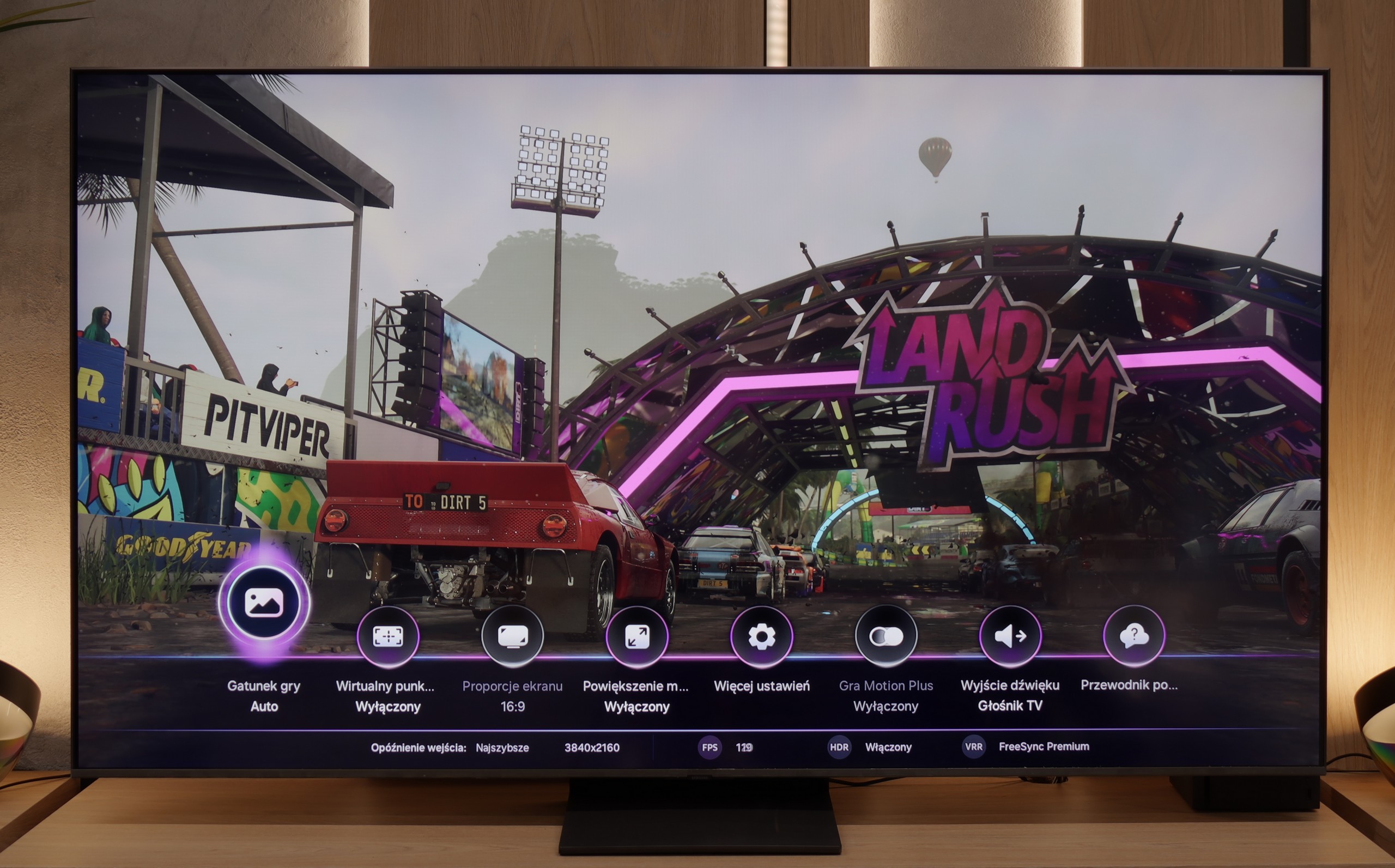
The TCL C6K is a television that can confidently be described as equipment designed with gamers in mind. Here we have 4K at 144 Hz, VRR support, automatic game mode (ALLM), and Dolby Vision Gaming. Additionally, there is a practical Game Bar, which is a panel with the most important settings easily accessible – useful when we want to quickly change something during gameplay (e.g. screen aspect ratio: Yes, it can be done!). The wide range of VRR is also noteworthy, reaching up to 240 Hz. However, this option is primarily for PC gamers who will drop the resolution below native 4K. At that point, the television can spread its wings and demonstrate extra fluidity, especially in fast-paced esports titles. In the case of consoles, we stick to the classic limit of 120 Hz, but the possibilities are still really broad. The only drawback might be slight ghosting, which can sometimes be seen in dynamic scenes. Apart from that, though, the C6K offers everything that gamers expect from a television.
The Samsung QN80F is a television that delivers on almost every front when it comes to gaming. We have a 144 Hz panel, four full-fledged HDMI 2.1 ports, support for gamers in the form of variable refresh rate (VRR), automatic game mode (ALLM), and even one of the best-designed game bars on the market. The cherry on top is the motion smoother, which – uniquely in the world – works in games without significantly increasing input lag. Sounds like an almost perfect television for gamers? And indeed, it is almost that.
As usual, Samsung does not support Dolby Vision in games, but that no longer surprises anyone. However, it is considerably more surprising that... the HGIG function has disappeared – that is, the system that allows the console (e.g., PlayStation 5 or Xbox Series X) to precisely match HDR tone mapping to the television’s capabilities. In the latest firmware update for the 2025 models, this option has simply vanished. This looks more like a mistake than a deliberate move, but it must be noted fairly that as of the date of writing this review, the HGIG function is simply not available.
And it is precisely because of this one missing feature that the QN80F transforms from an almost perfect gaming television into a “nearly” perfect device. It’s a shame – because everything else suggested that Samsung could once again set the bar very high in this generation.
Input lag
9.7/10
9.8/10
SDR
HDR
Dolby Vision
In terms of input lag, the TCL C6K performs exceptionally well. With 120 Hz content, the latency is around 10 ms, and at times even less. This is a level at which the response is practically instantaneous, and it is difficult to find any issues. With 60 Hz materials, the result is around 18 ms – still a very good outcome, entirely sufficient for comfortable gaming.
The QN80F does not disappoint when it comes to response time. The input lag for 120 Hz content drops below 10 ms, which can be considered an almost perfect result – it is hard to expect more in this class of TVs. Gaming is smooth, responsive, and without delays that could annoy even the most sensitive players. For 60 Hz materials, the lag is higher, around 19 ms, but this is a completely natural phenomenon and still falls within comfortable limits.
Compatibility with PC
8.6/10
8.8/10
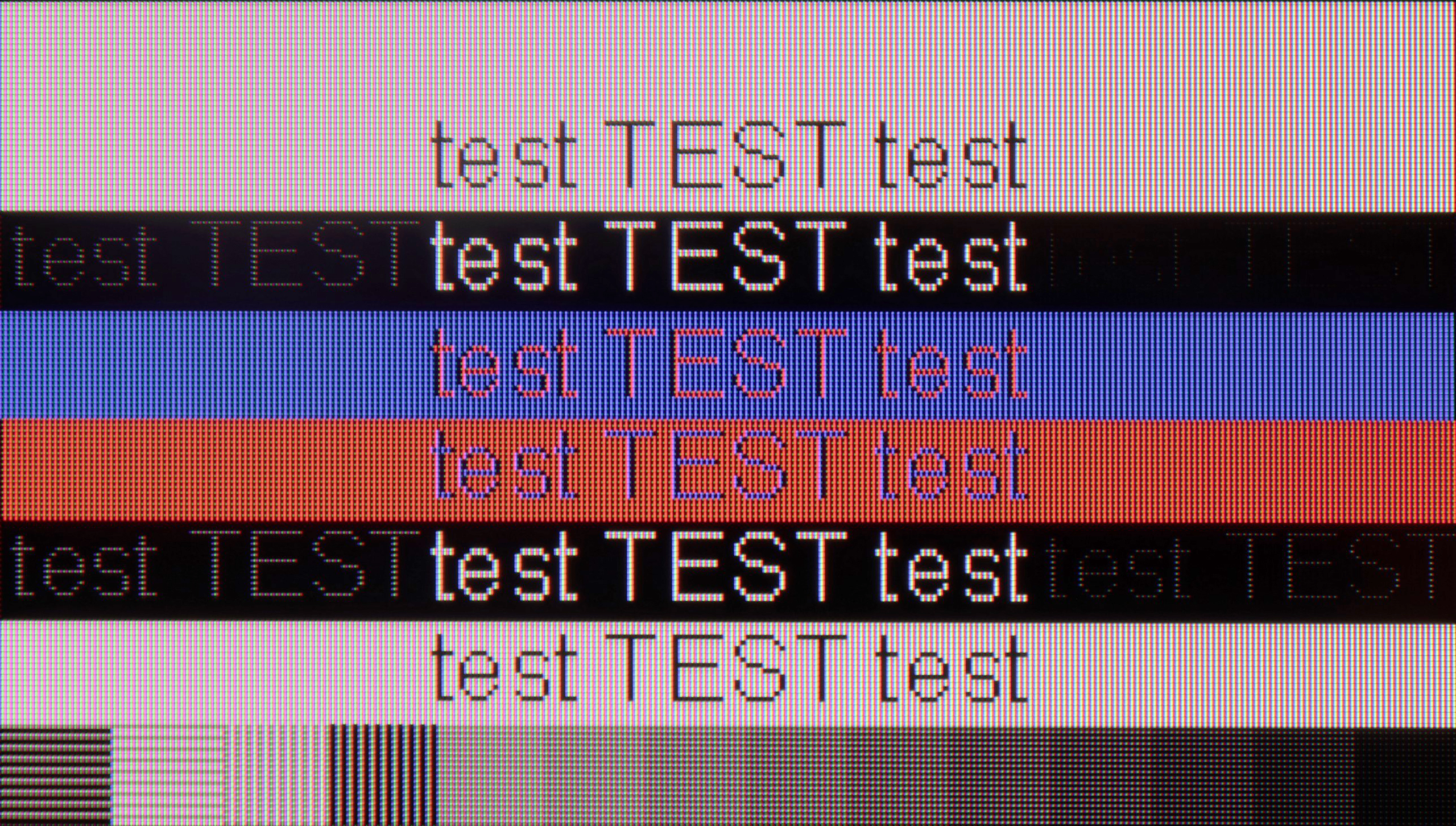
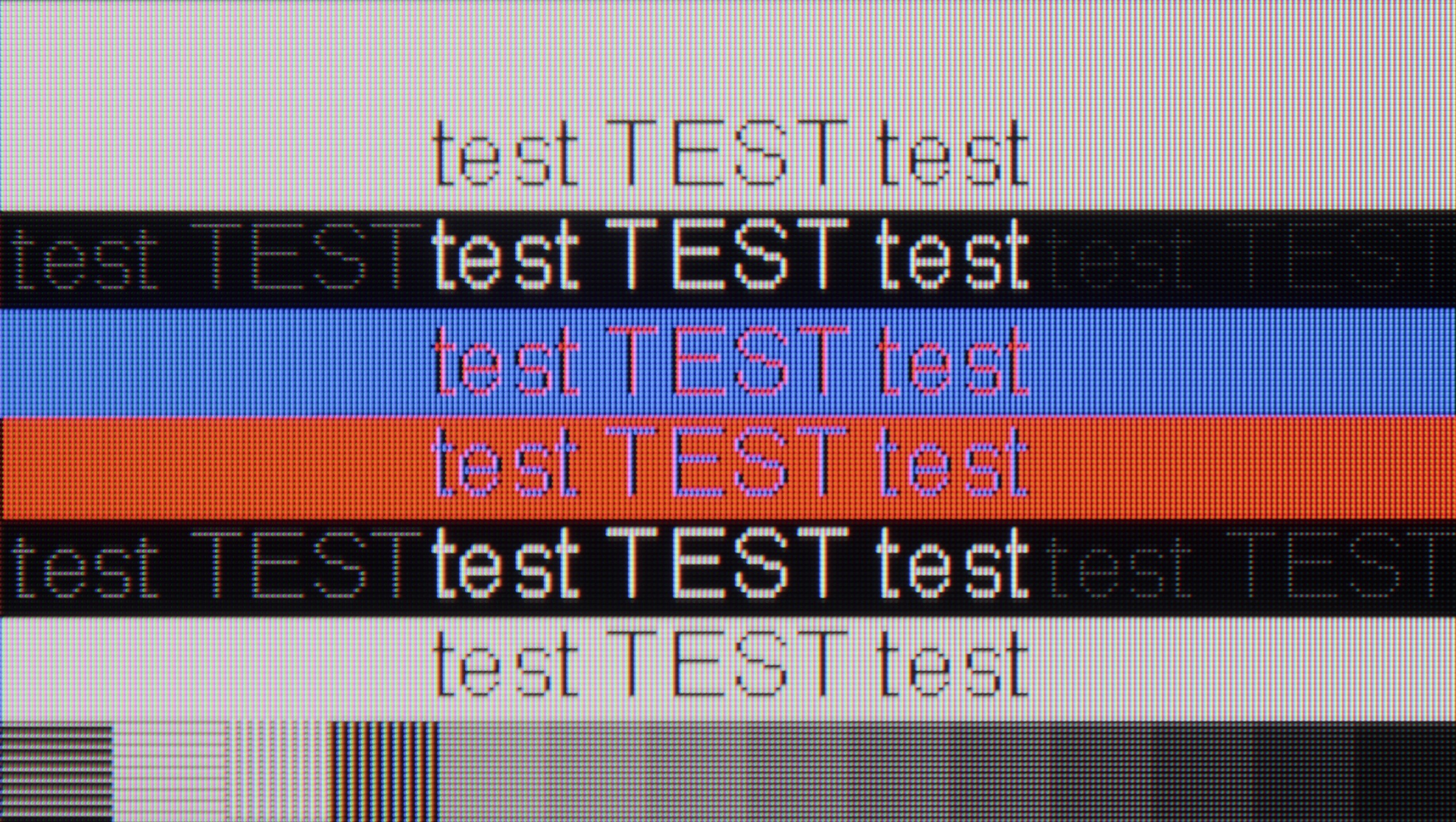
After connecting to the TCL C6K computer, it performs wonderfully. At its native resolution, we have 4K at 144 Hz, and if we lower the resolution, it can even reach 240 Hz. Additionally, the television communicates well with Nvidia and AMD cards – it supports both G-Sync and FreeSync. It's also difficult to criticise for office work. Fonts are sharp and readable thanks to 4:4:4 chroma support, and any minor imperfections are so small that they simply go unnoticed during normal use.
Playing on the QN80F with a connected computer is pure pleasure. The television effortlessly works with NVIDIA graphics cards (thanks to G-Sync support) and AMD (thanks to FreeSync Premium), and the 144 Hz refresh rate only enhances comfort during dynamic gameplay. Everything works immediately, without unnecessary fiddling with settings – exactly as it should.
When it comes to work, it is also very good. The readability of fonts is at a high level, and texts appear sharp and clear. With very thin horizontal lines, some minor imperfections in shading can be noticed, but honestly – you really have to look closely. Unless, like us, you sometimes enjoy looking at the screen with a magnifying glass… then you might spot something 😉.
Viewing angles
3/10
3.1/10
In the TCL C6K, the viewing angles are typical for a VA panel. Sitting directly in front, the picture looks very good, but any shift to the side results in a noticeable drop in colour saturation and brightness. The difference is particularly evident in colourful scenes – the hues become washed out, and the contrast loses its depth. Compared to IPS panels, this is a clearly weaker performance, although the trade-off is better black levels and higher native contrast – “you win some, you lose some.”
QN80F, like most TVs with a VA panel, does not impress in terms of viewing angles. All it takes is a slight lean to the side to notice a significant drop in brightness and lost colour saturation. The picture loses its "depth" and "vibrancy", and darker scenes may appear slightly washed out. However, this is a typical characteristic of VA panels, which provide significantly better native contrast than IPS panels in return. In short: something for something. If you are sitting directly in front of the screen, there will be no problem. But when watching together in a larger group, it is worth keeping this in mind.
TV efficiency during daytime
6.4/10
6.6/10
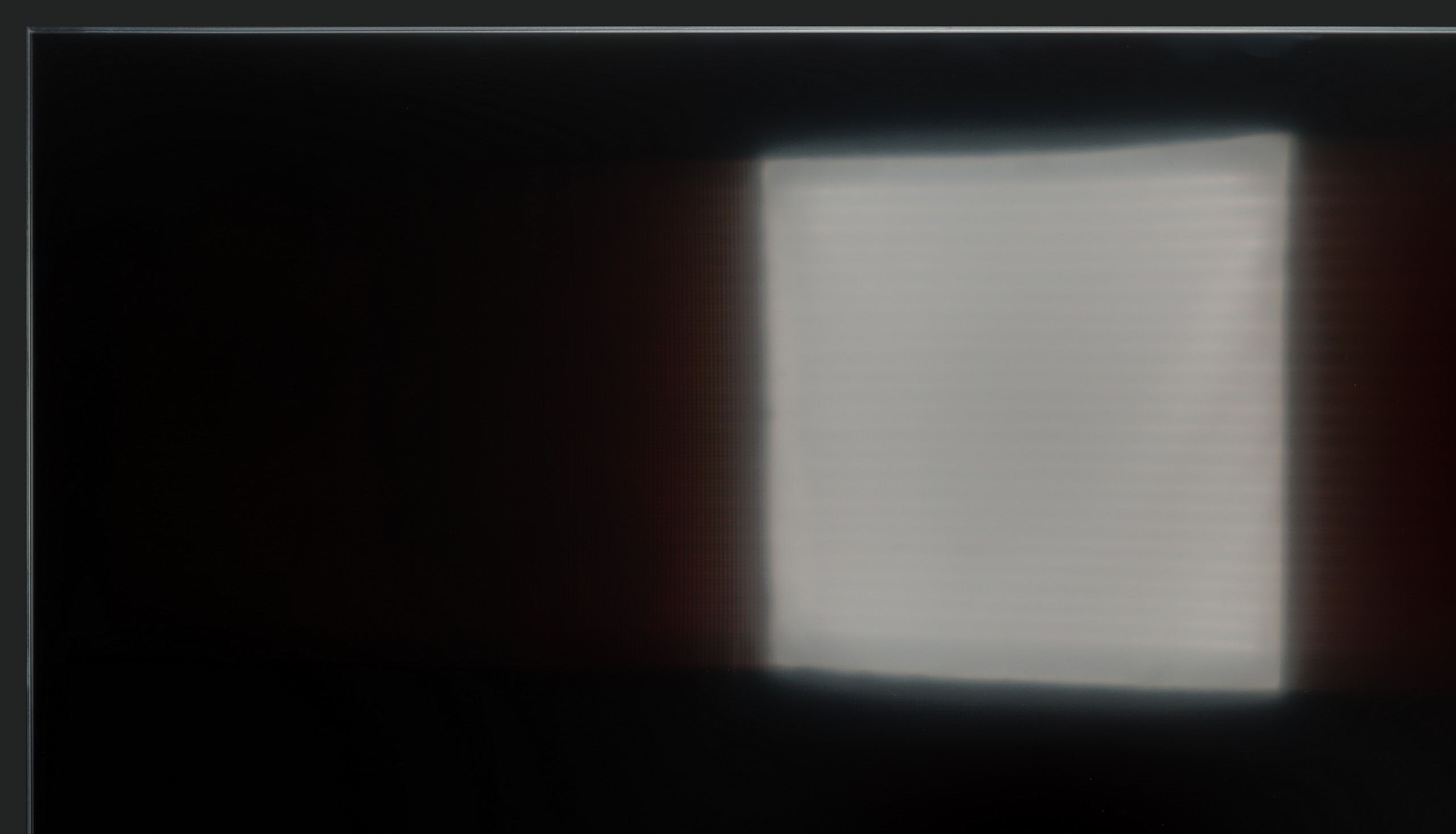
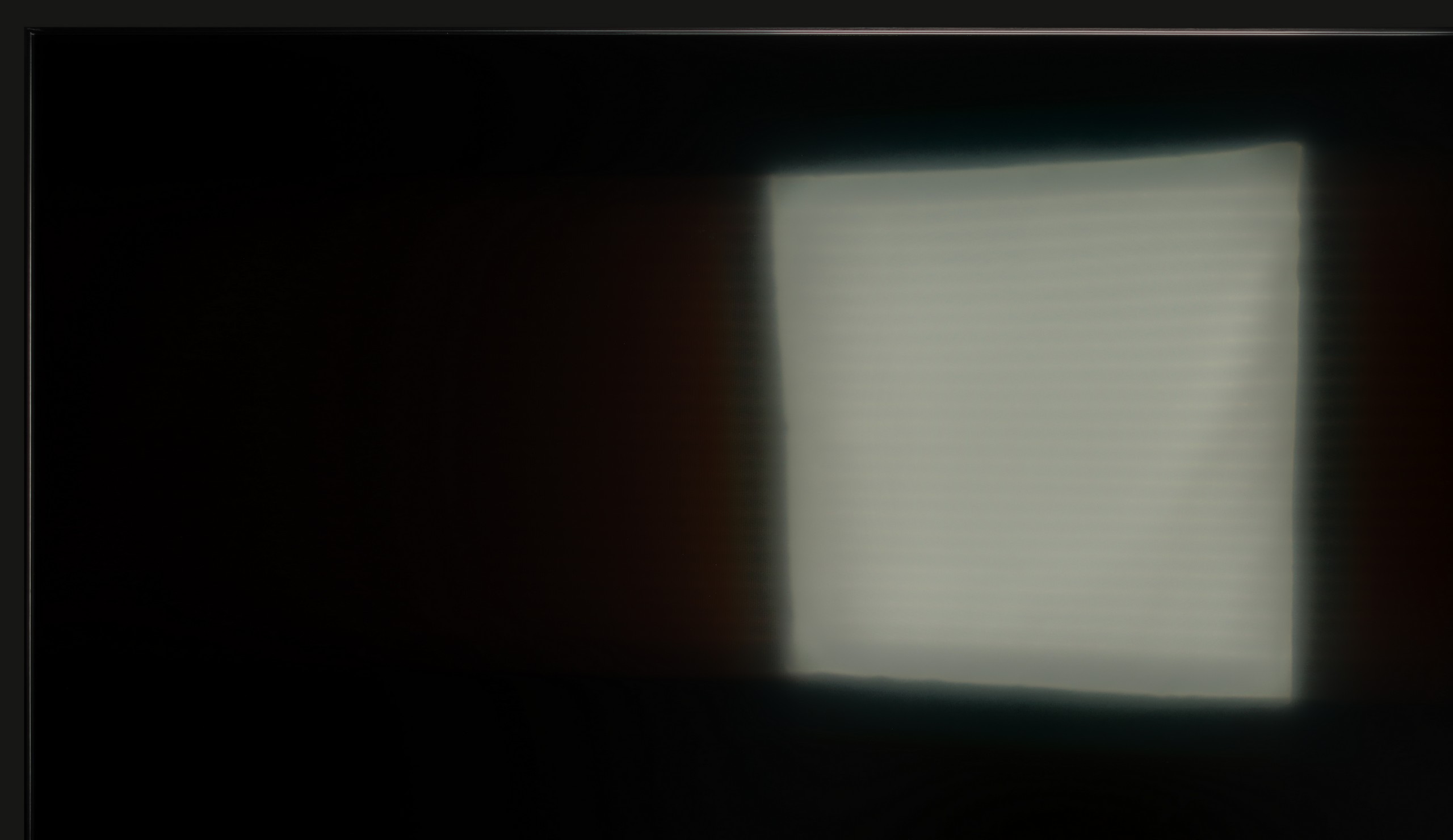


Matrix brightness
Average luminance SDR
Samsung QN80F: 543 cd/m2
TCL C6K: 532 cd/m2
TCL C6K performs quite well in bright lighting conditions. The panel offers decent brightness – in SDR content, it reaches around 550 nits, which allows for comfortable television viewing in a moderately lit living room, and even on days with strong light coming through the windows. This means that daytime viewing does not require complete darkening of the room. It's also worth noting that the screen coating does quite a good job of reducing reflections, so the television does not turn into a "mirror" even with strong lighting. However, this is not on the level of top models with more advanced anti-reflective coatings – in very challenging conditions, such as with large glazing, reflections will be noticeable.
The QN80F is truly a bright television. The average brightness in SDR content is around 550 nits, regardless of the scene, which in practice means that you can comfortably watch content even in a well-lit room – and you don’t have to close the blinds every time you turn on a film. The new satin coating on the panel also deserves praise, as it performs significantly better at reducing reflections compared to last year’s QN80D. Glare is less bothersome, and the screen maintains readability in various lighting conditions. It’s hard to find fault here – the QN80F performs simply excellently during the day.
Details about the matrix
Subpixel Structure:
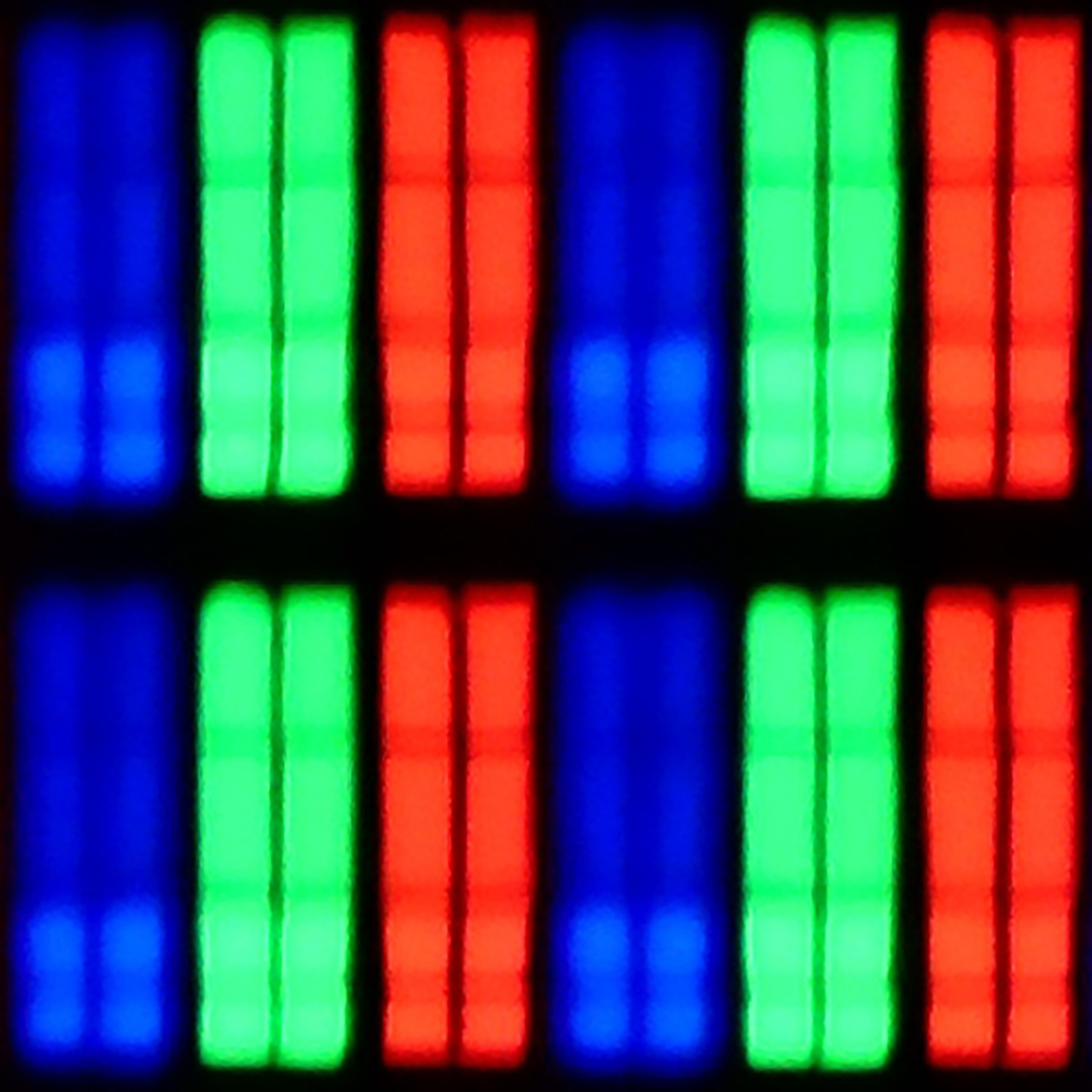

Panel uniformity:

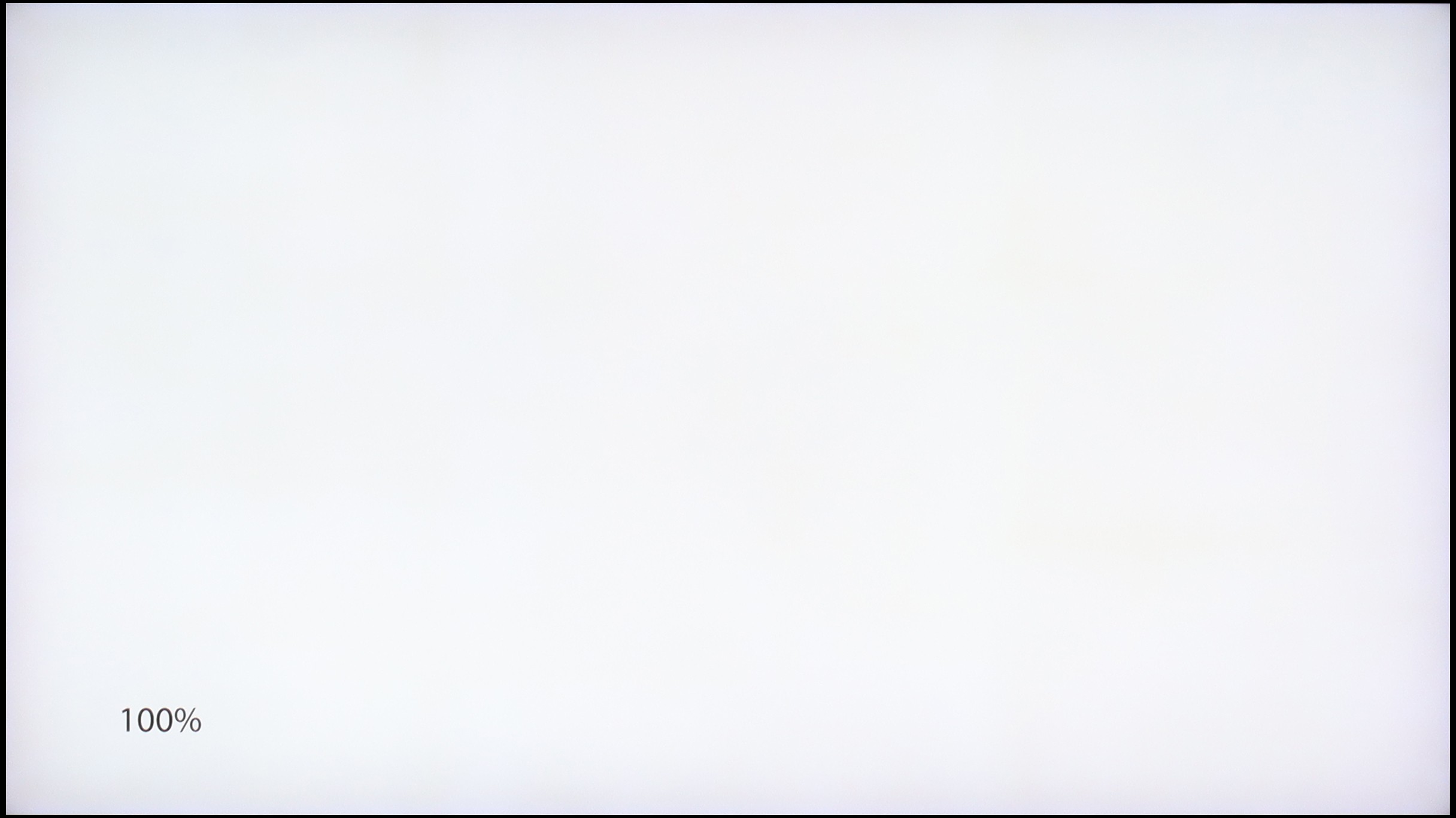
TCL C6K
Samsung QN80F
TV features
7/10
7.7/10
- HDMI inputs2 x HDMI 2.0, 2 x HDMI 2.1 48Gbps0 x HDMI 2.0, 4 x HDMI 2.1 48Gbps
- OutputsToslink (Optical audio), eARC (HDMI), ARC (HDMI)Toslink (Optical audio), eARC (HDMI), ARC (HDMI)
- Network InterfacesWi-Fi 2.4GHz, Wi-Fi 5GHz, Ethernet (LAN) 100MbpsWi-Fi 2.4GHz, Wi-Fi 5GHz, Ethernet (LAN) 100Mbps
- TV receptionDVB-T, DVB-T2, DVB-S, DVB-S2, DVB-CDVB-T, DVB-T2, DVB-S, DVB-S2, DVB-C
Classic features:
- Recording to USB (terrestrial TV)
- Recording programming
- Picture in Picture (PiP)
- RF remote control (no need to aim at the screen)
- Backlit remote control
- Teletext
- Audio only mode
- Possibility to connect Bluetooth headphones to the TV
- Possibility to simultaneously use Bluetooth headphones and the TV speaker
Smart features:
- AirPlay
- Screen mirroring (Windows Miracast)
- Wyszukiwanie głosowe
- Voice search in native language
- Ability to connect a keyboard and mouse
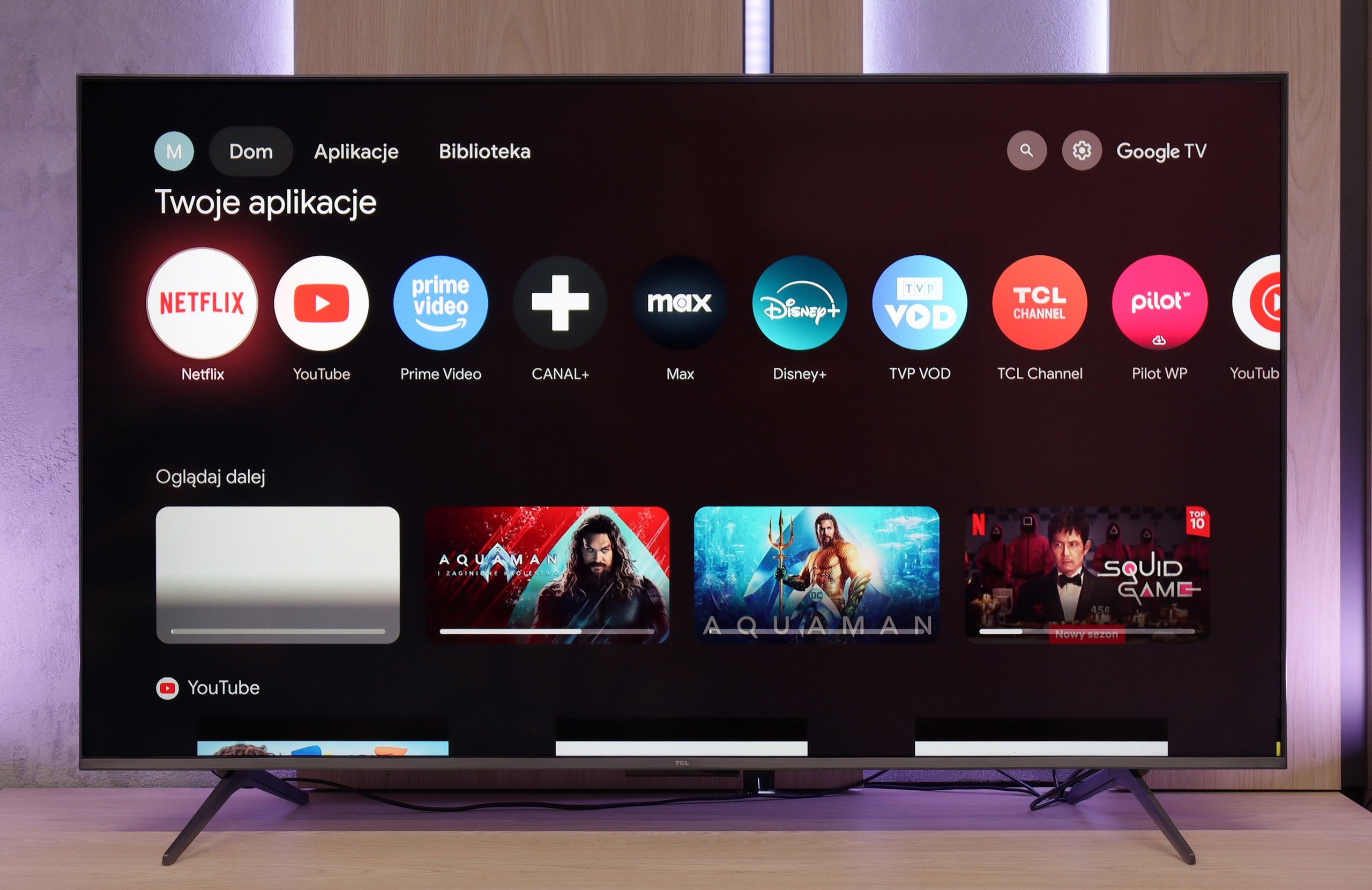
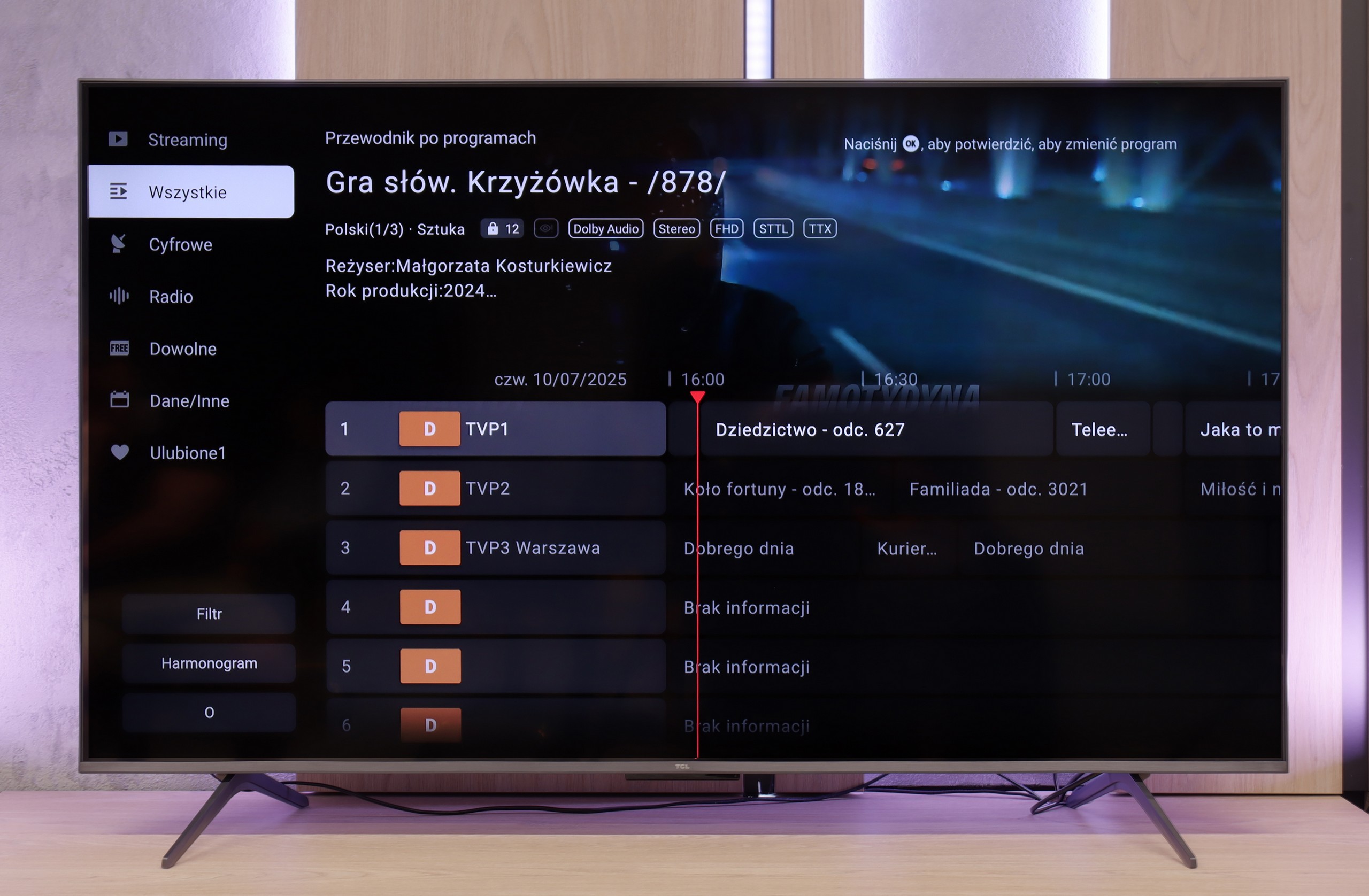
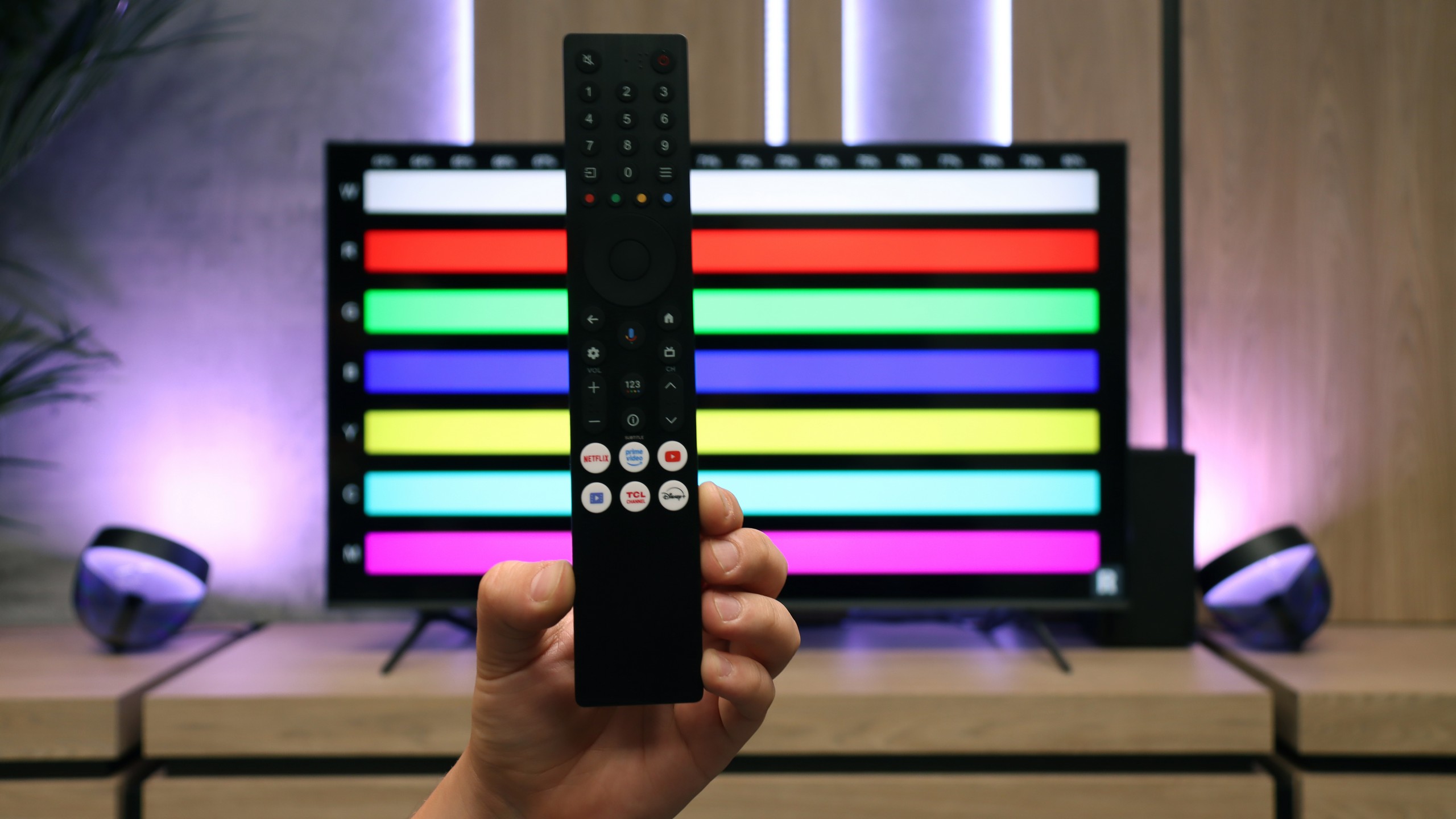
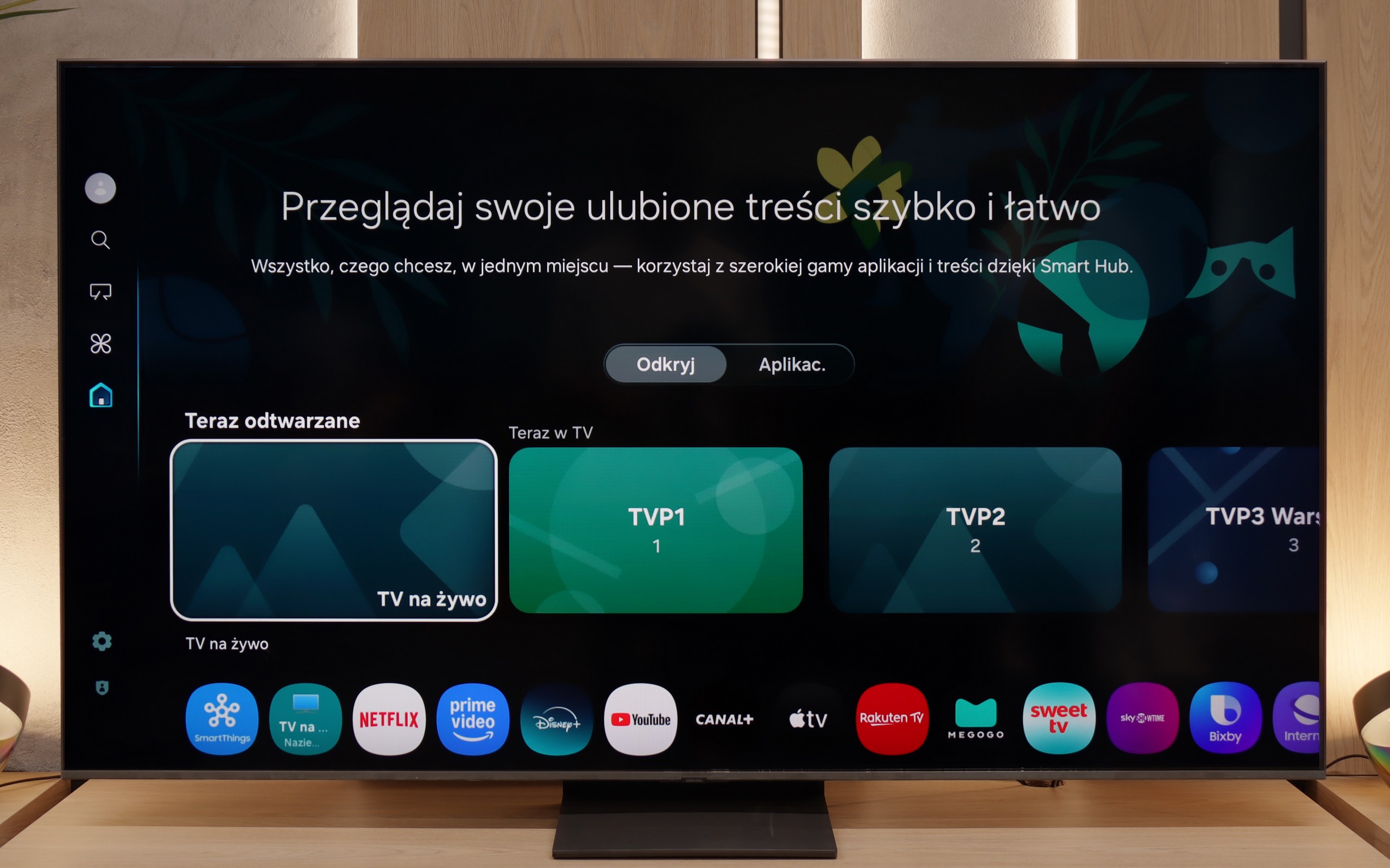
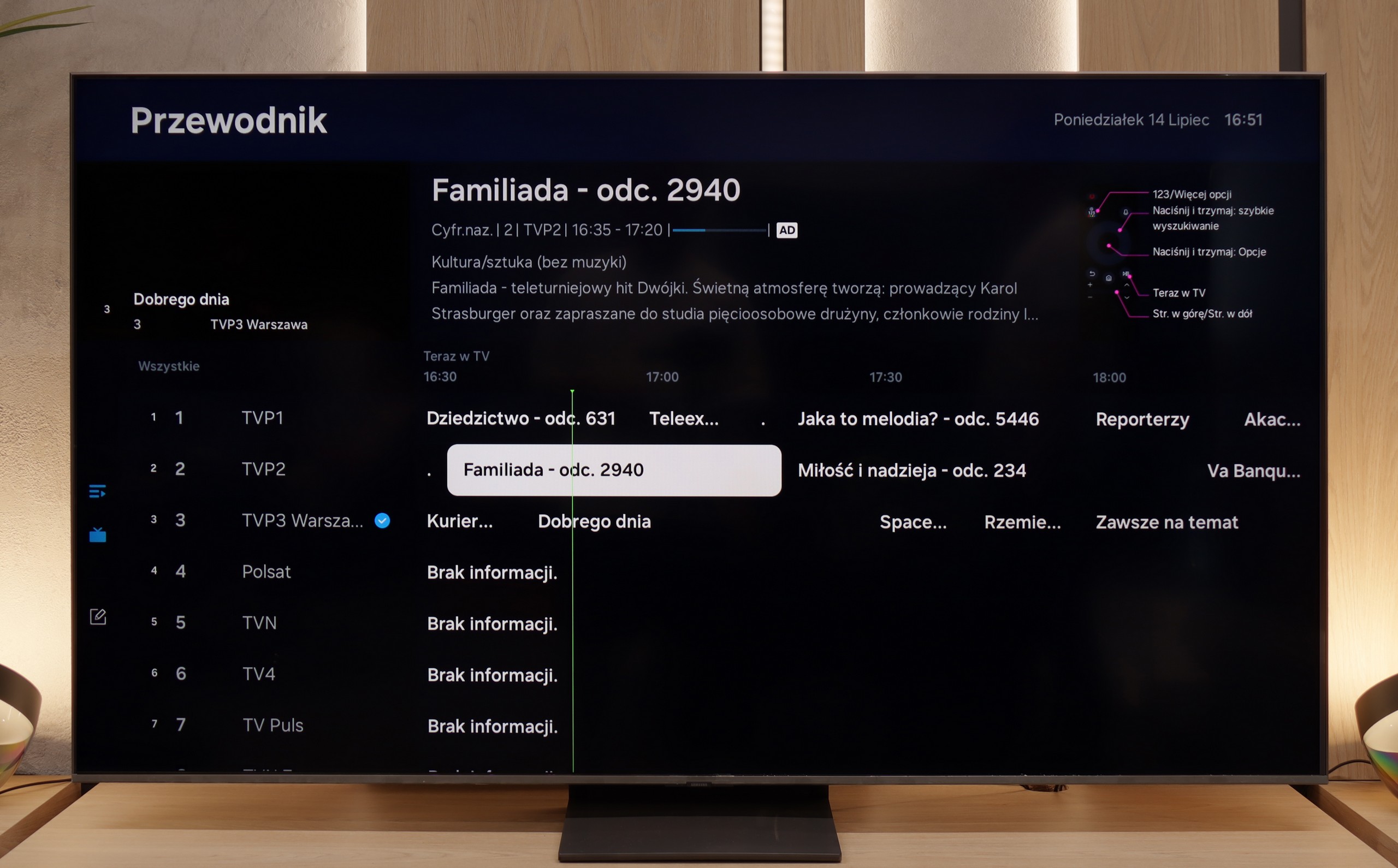
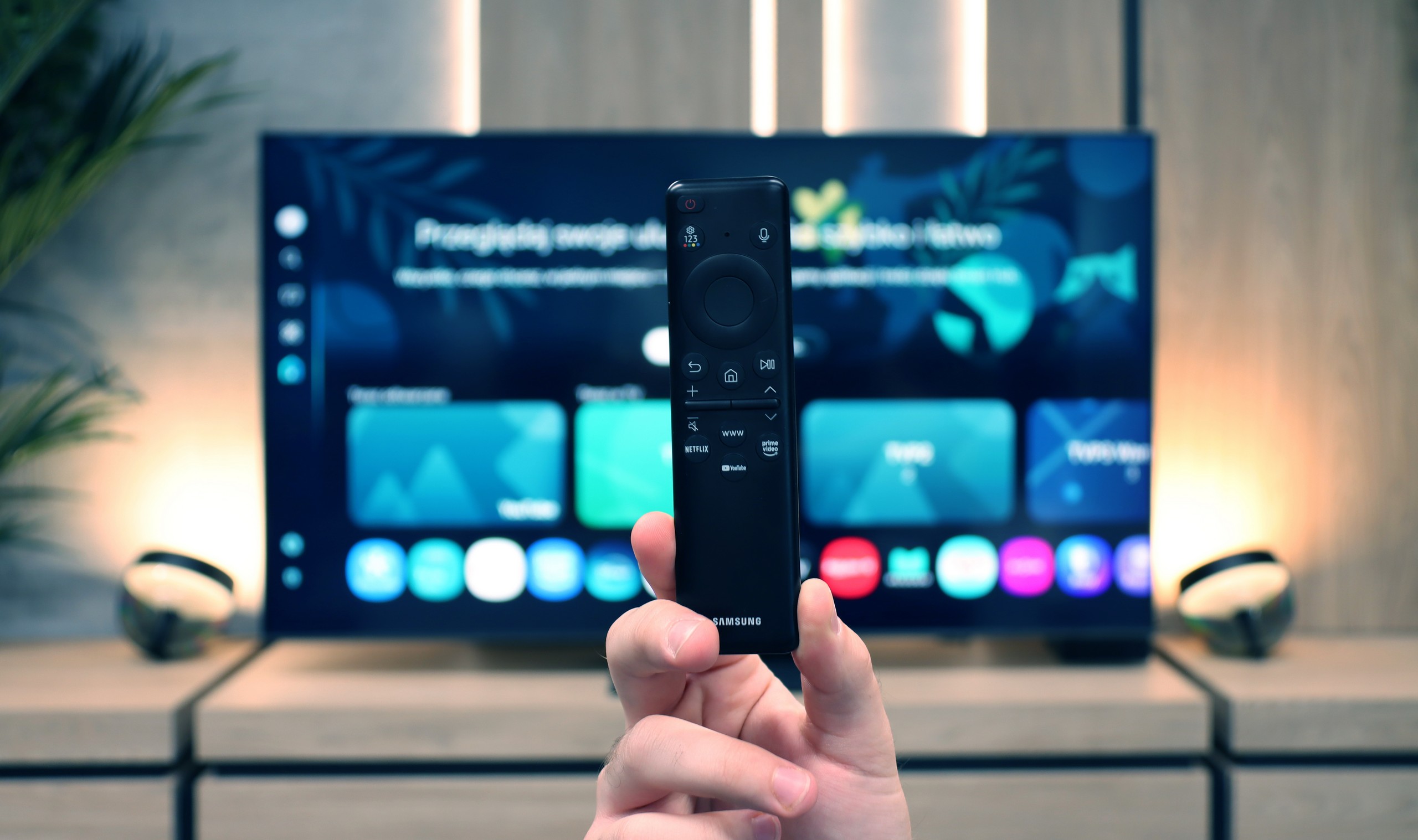
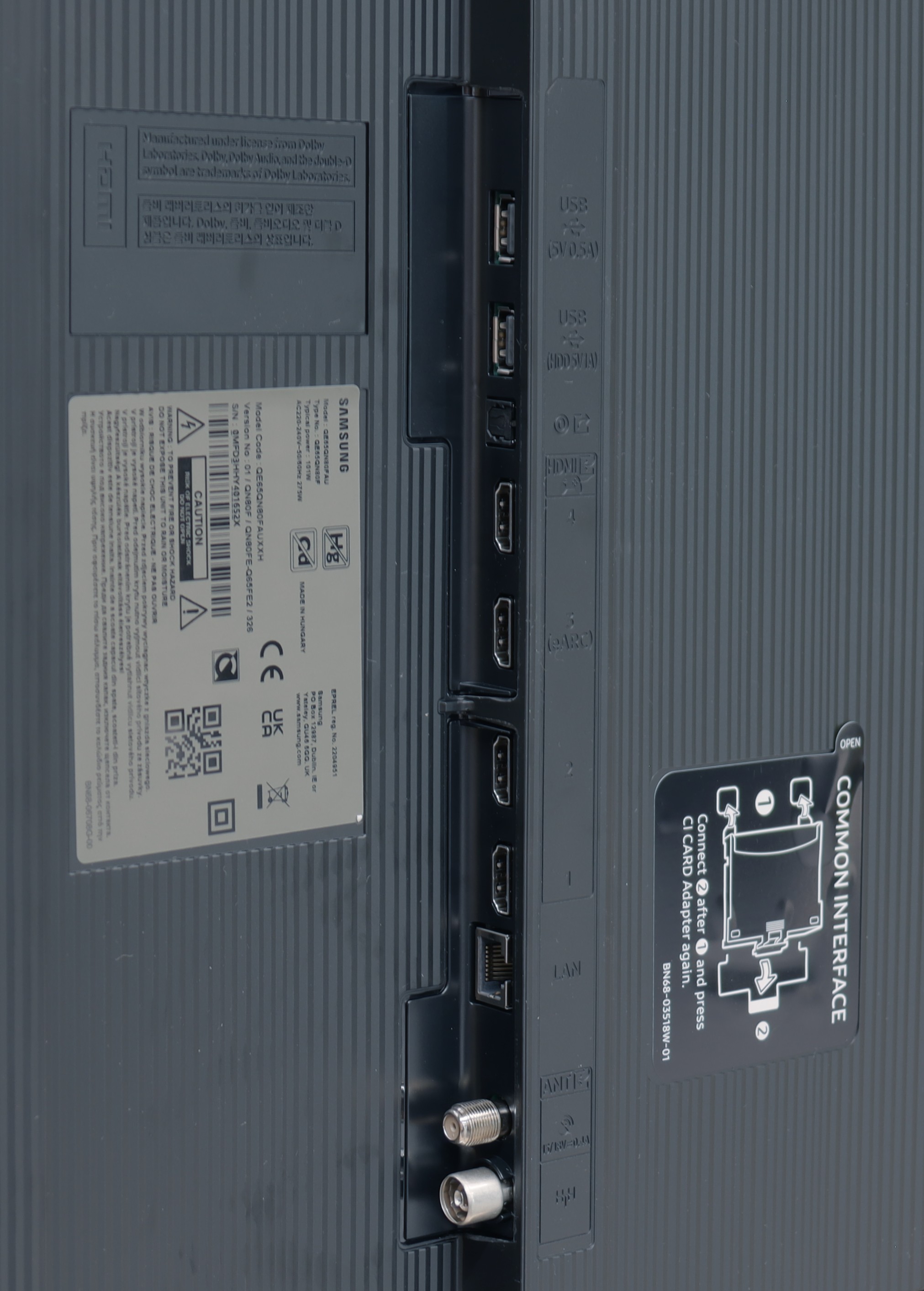
Multimedia Features: Google TV
The strongest aspect of the TCL C6K is undoubtedly the Google TV system. It gives the television character and provides an edge over many competitors. We have a full package of services here – from support for popular streaming apps, to screen mirroring support, and even AirPlay, allowing iPhone users to feel right at home. Additionally, it features Google Assistant (recently with the Gemini AI version), which not only answers questions but also efficiently executes simple commands, such as changing channels or searching for content on VOD services. The system operates quite responsively, although one must mention a certain drawback – the awkward translations in the Polish menu can elicit a smile but sometimes require a moment of reflection to decipher what is actually meant.
Classic Features
When it comes to classic television functions, the TCL C6K performs rather average. There is no USB recording or PiP mode, which may be disappointing for some. However, the manufacturer has not forgotten the basics – teletext television and a clear EPG are available, which still matter to some users. In everyday use, the Bluetooth support for external audio devices is also handy – a simple way to connect a speaker or headphones, which can be a practical solution for seniors. Besides that, it is hard to find elements here that would distinguish the C6K from its competitors – it is simply a solid, but standard package of basic functions.
SmartTV QN80F: Tizen
In terms of smart features, the QN80F has nothing to be ashamed of. On the contrary – Tizen is one of the richest operating systems when it comes to functionality. We have voice search, support for AirPlay, Miracast, and all the major streaming platforms at our fingertips. But Samsung's true advantage reveals itself in the smart home – SmartThings. Here you can not only synchronise light bulbs and vacuum robots but also integrate devices from other manufacturers, thanks to support for the Matter standard. And suddenly it turns out that the QN80F can serve as a home command centre. There is just one "but" – Tizen is a closed system, so we may not find a few lesser-known applications. Although in practice it has everything that 99% of users need.
Classic TV features:
When it comes to classic features, it is just as good – well, almost. The QN80F supports picture-in-picture, which is a rarely seen but still useful PiP function. We can easily find the EPG, good old teletext (yes, it works!), and the ability to connect external devices via Bluetooth – whether it's headphones or a soundbar. Unfortunately, there is a lack of the option to record to USB from the built-in tuners. This is a minor setback, especially since the competition at a similar price increasingly offers this feature. It may not be a must-have function, but since everything else works so well, it's a pity that this feature is missing a dot over the i.
Playing files from USB
8.9/10
9/10
Supported photo formats:
Maximum photo resolution:
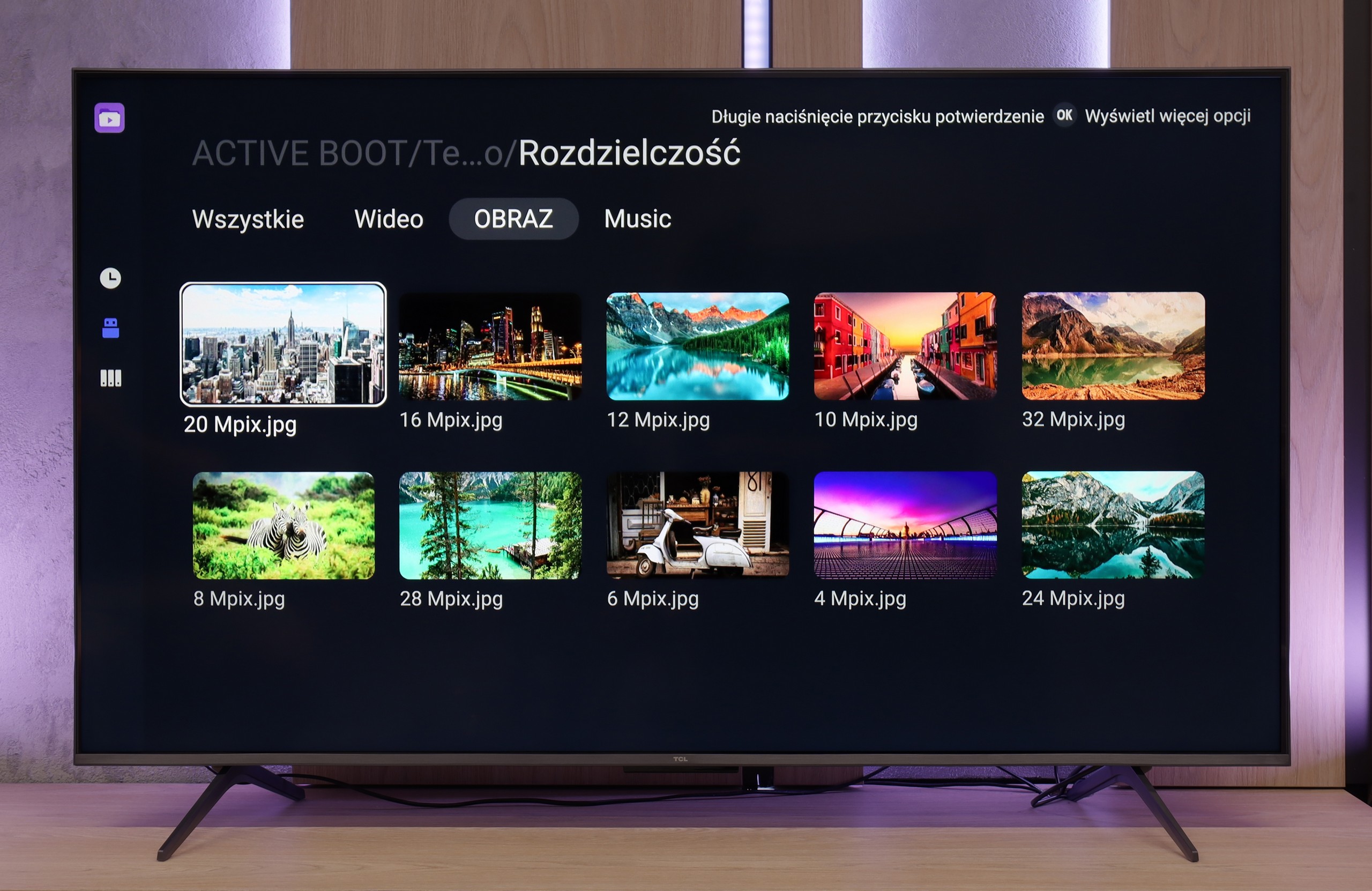
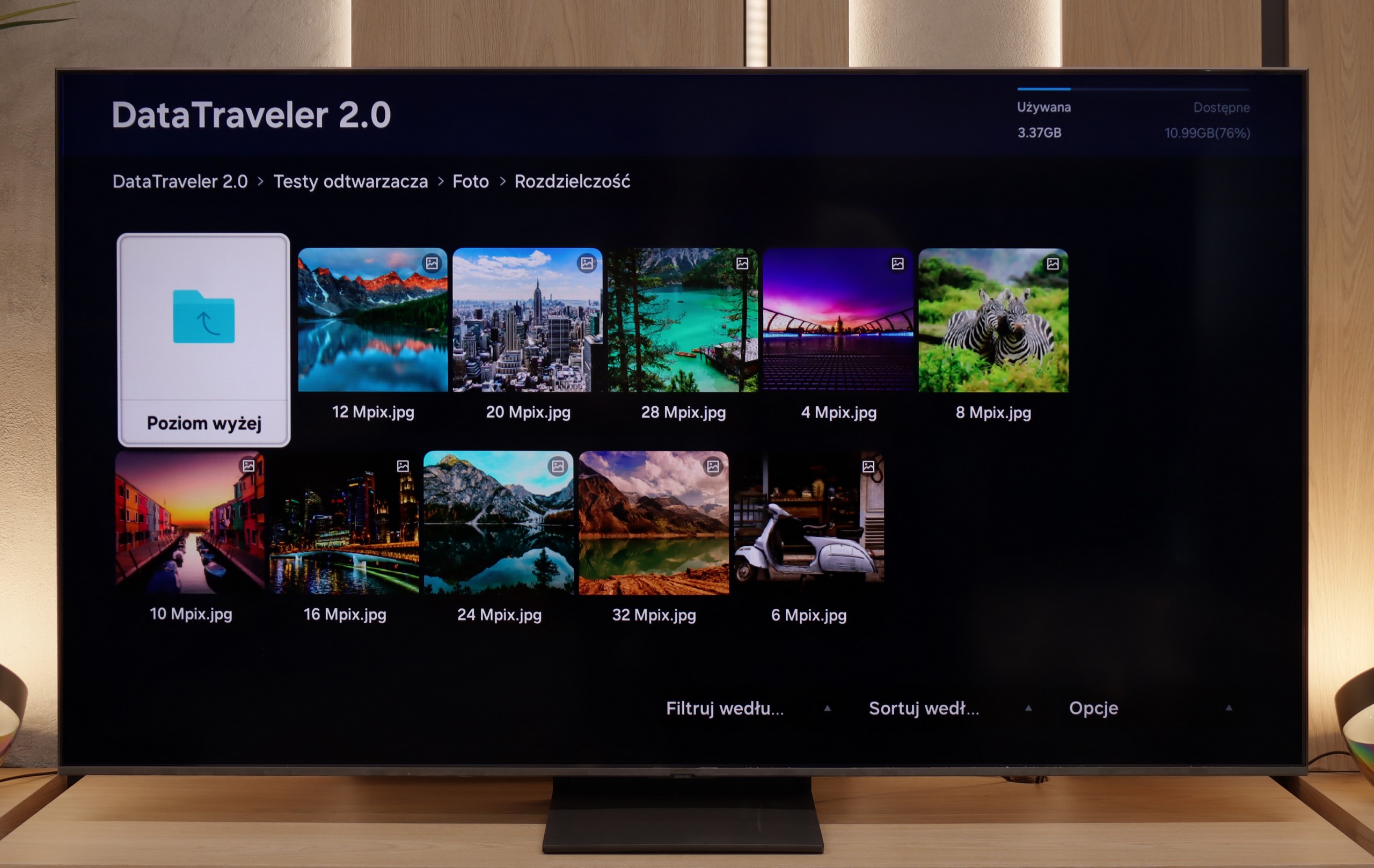
The built-in media player in the TCL C6K performs really well - almost all popular file formats work without significant issues. There are indeed minor exceptions, particularly with less common codecs or unconventional video file configurations, but in everyday use, this is rarely noticeable. The biggest advantage, however, is that the television runs on Google TV, which provides complete freedom in choosing additional software. If someone encounters a file that the standard player cannot handle, it's enough to install an alternative - such as VLC - and the problem disappears.
The built-in media player in the QN80F handles most popular video formats – from classic MP4 to slightly more demanding containers. It may not be a powerhouse like VLC, but it's perfectly adequate for home use. The situation is less impressive with photographs – here, unfortunately, it's rather modest. Support is mainly limited to the JPG format, but hey, at least that's the most important one 👌. During our tests, there was also a slight issue with subtitles. The QN80F could only handle the simple text format .txt – other, more advanced formats (like .srt or .sub) were unfortunately not recognised.
Apps
9.6/10
8.7/10














































Sound
6.5/10
6.7/10
- Subjective sound quality:6.5/106.7/10
- Dolby Digital Plus 7.1:
- Dolby True HD 7.1:
- Dolby Atmos in Dolby Digital Plus (JOC):
- Dolby Atmos in Dolby True HD:
- DTS:X in DTS-HD MA:
- DTS-HD Master Audio:
In terms of audio, the TCL C6K performs quite well. The manufacturer has been boasting about its collaboration with the Onkyo brand for several years, and it indeed translates into sound quality. The sound is pleasant, with clear mid-tones and a fairly crisp top end, and overall it feels well-balanced. Of course, it can't replace a full-fledged soundbar, especially in terms of bass depth, but as far as built-in speakers in a television in this price segment go – it's really very good.
For a television of this class, the QN80F sounds surprisingly good. It supports the Dolby Atmos format, which is worth noting, as this is still not a given in many models in this range. Unlike the thinner QN70F, here you can even feel a slight bass – all thanks to the thicker casing, which simply provides more space for the sound to "breathe." It's perfectly adequate for everyday viewing and series, and with the right settings, one can even be tempted to listen to music without the need for external equipment. However – as is often the case with Samsung, there is unfortunately a lack of support for the DTS:X format, so if we are using audio devices that support this format, we will first need to connect them to the amplifier and only then to the television.


